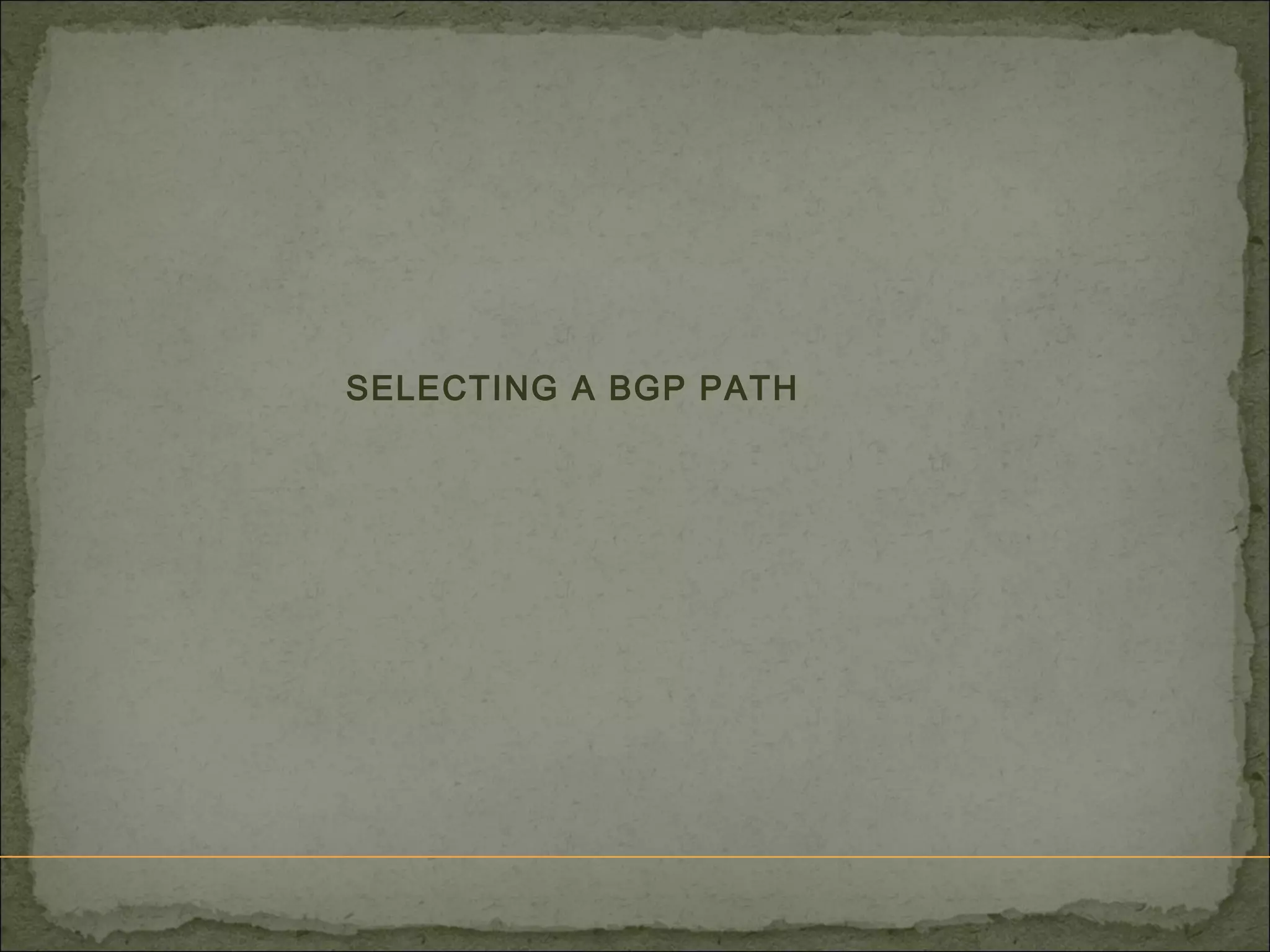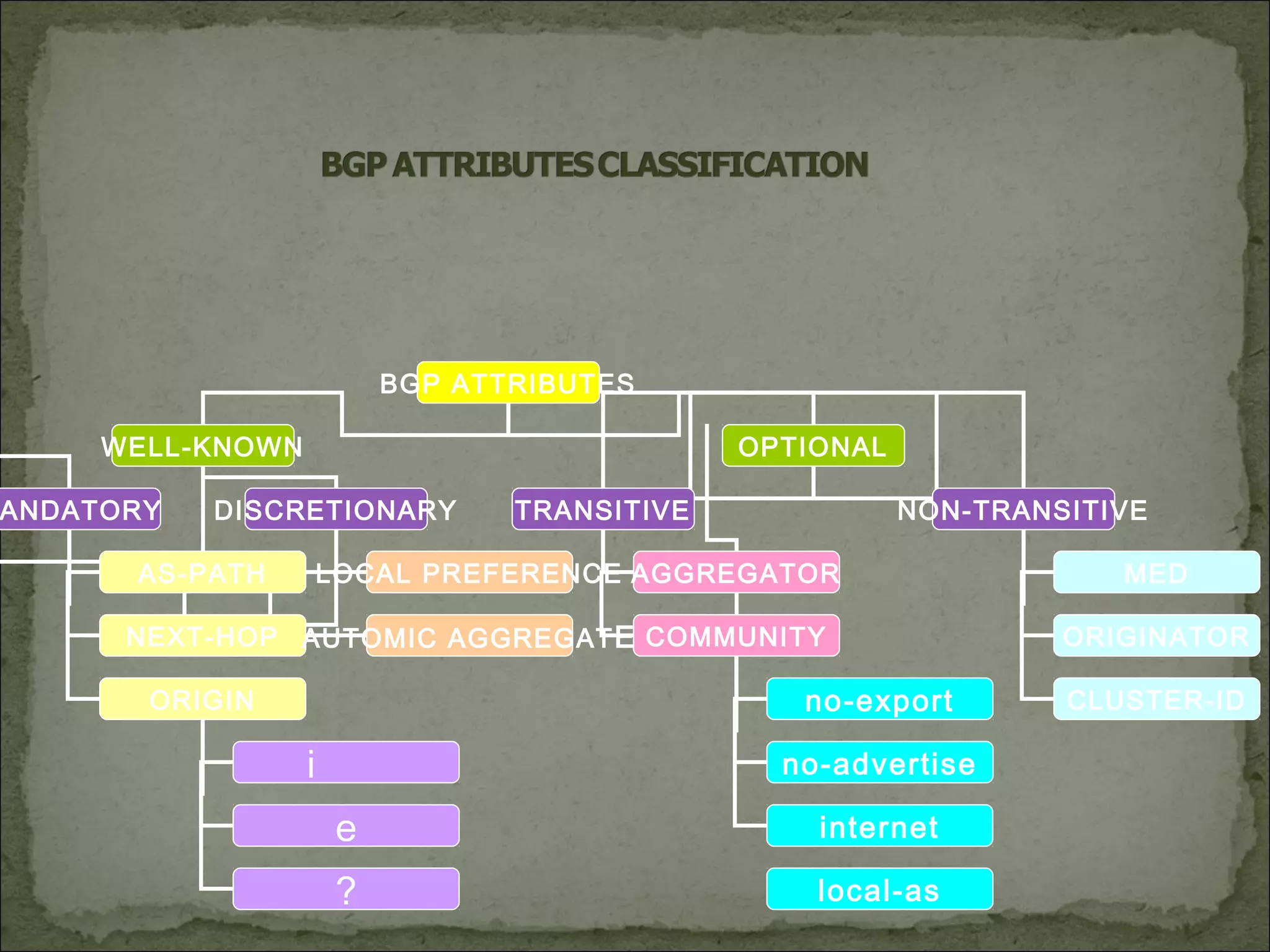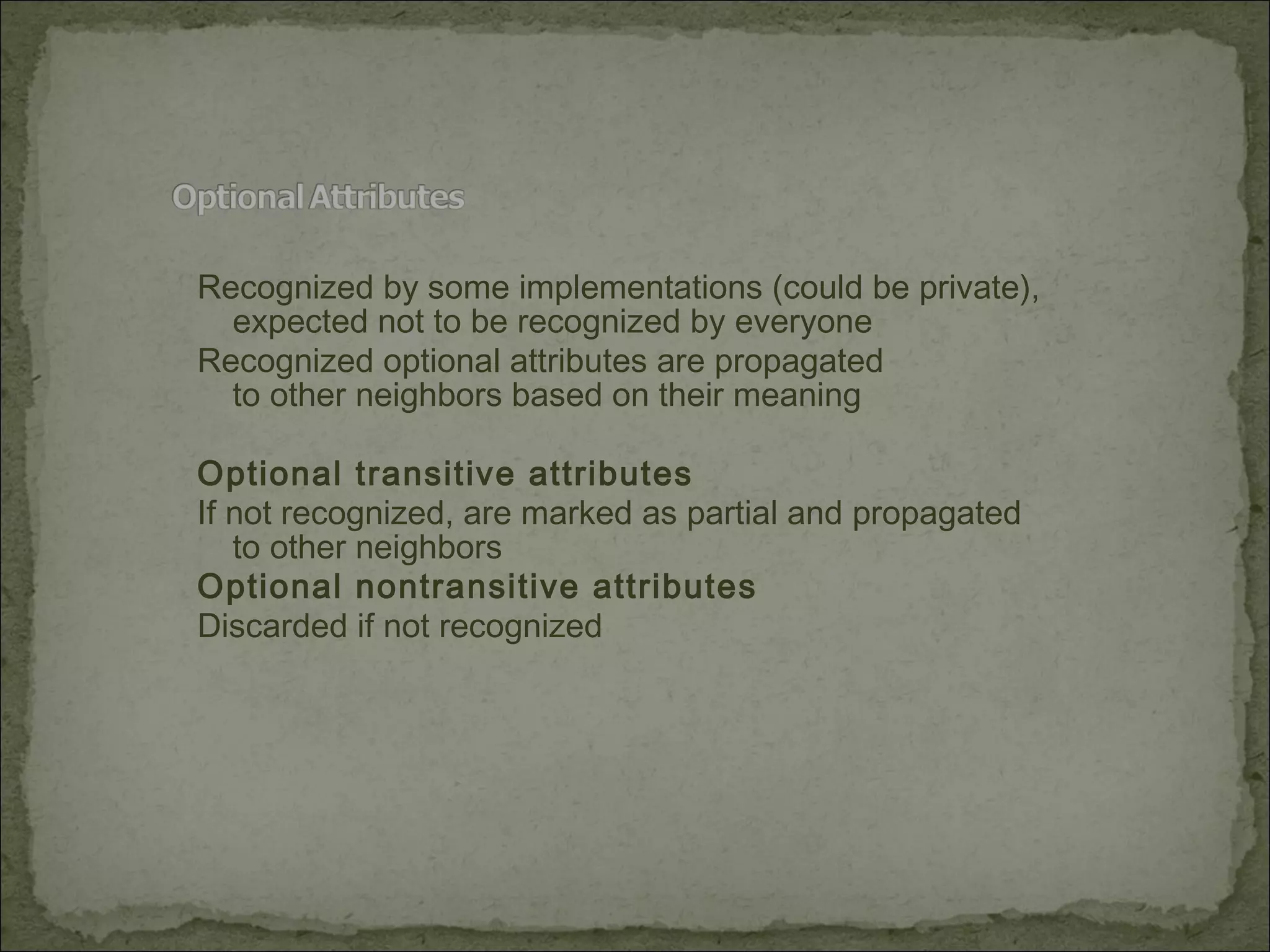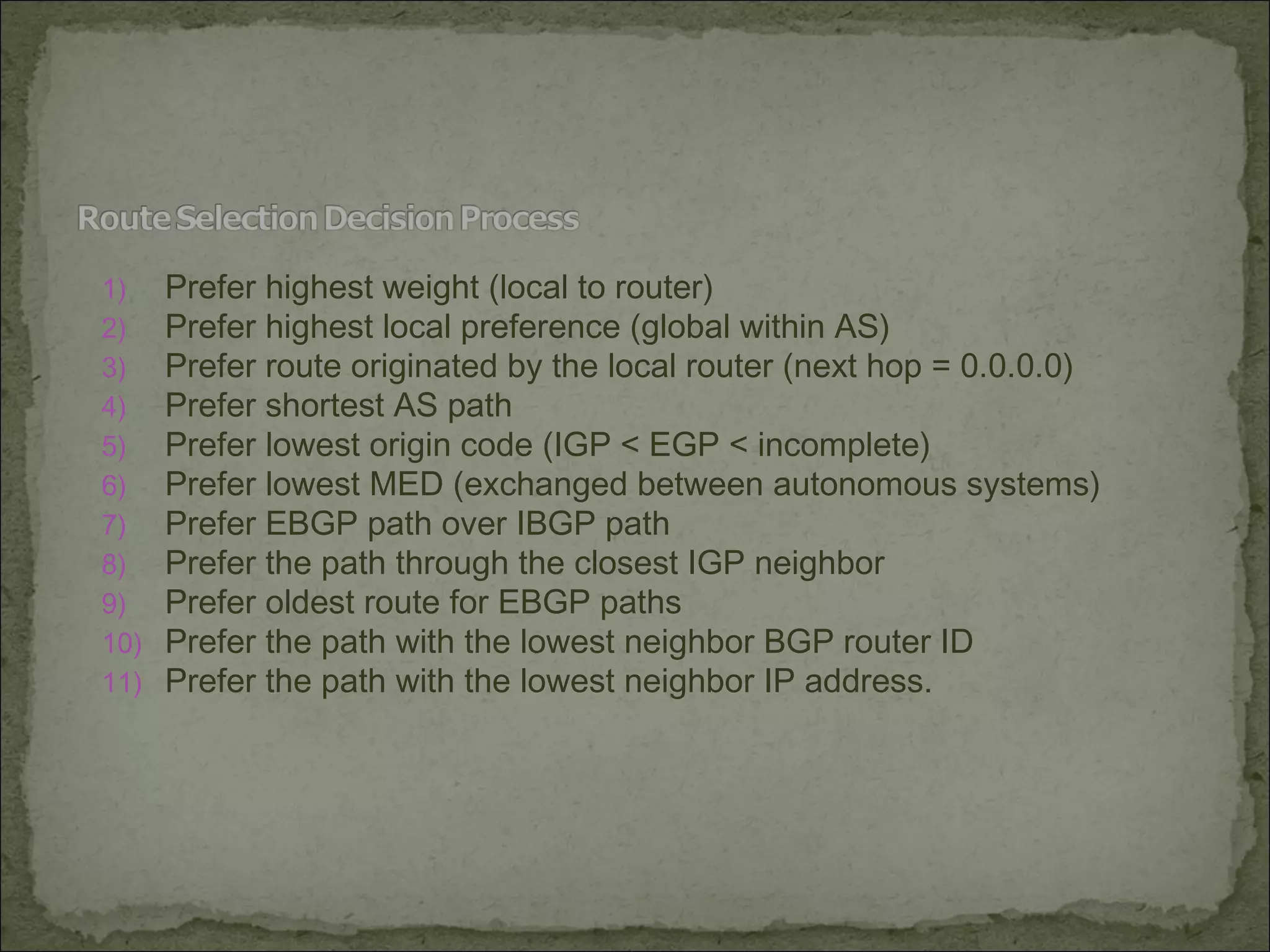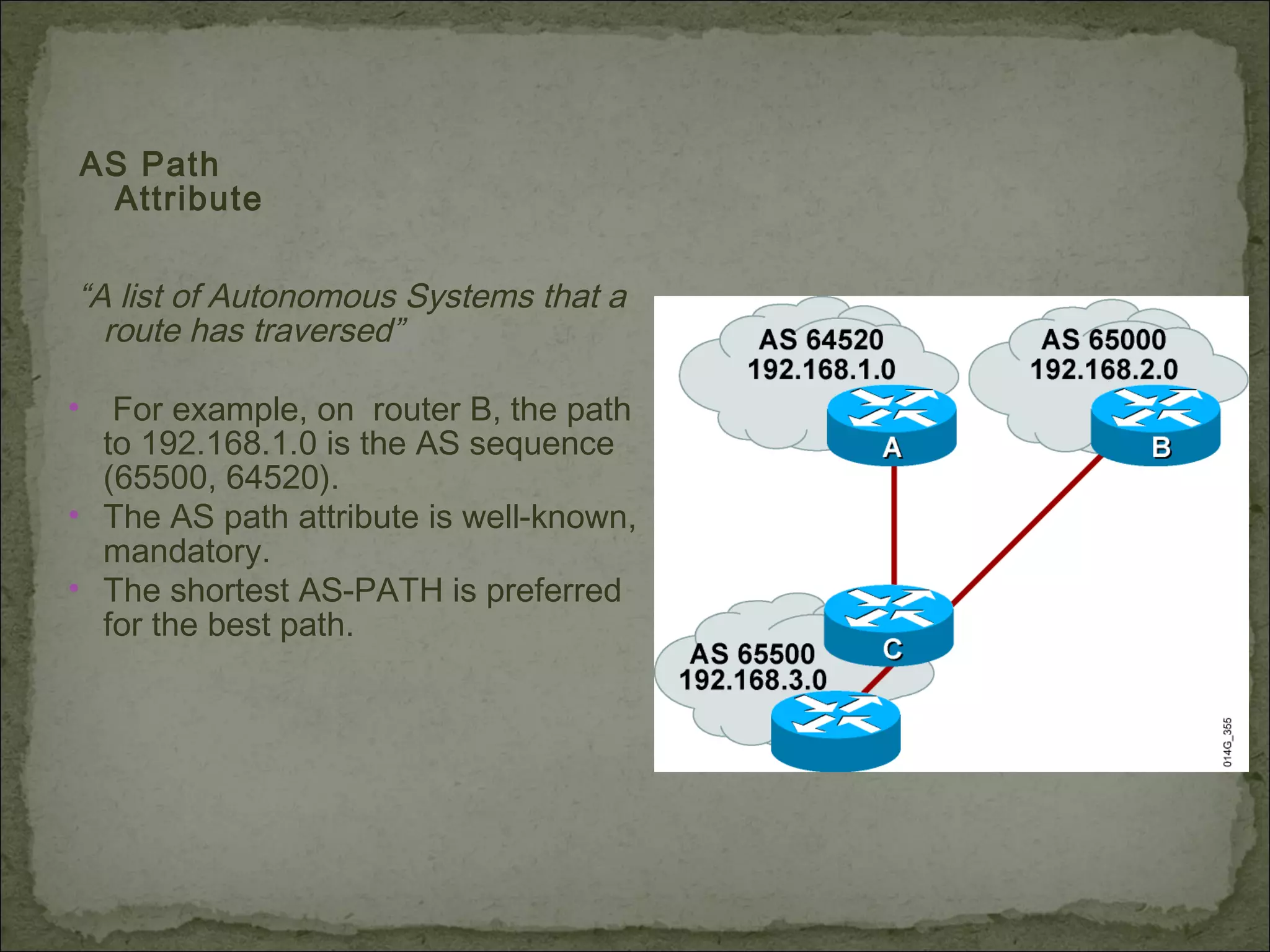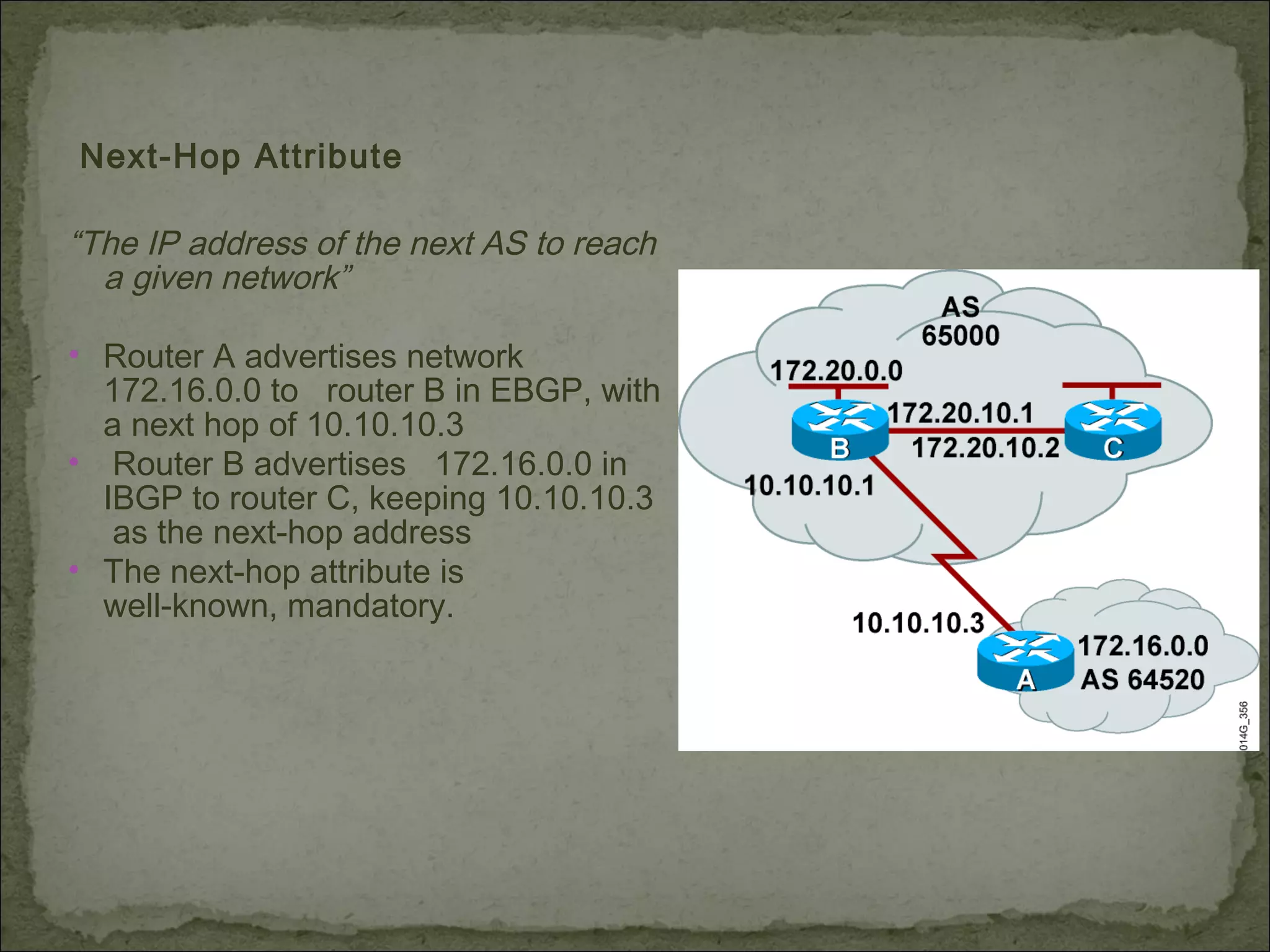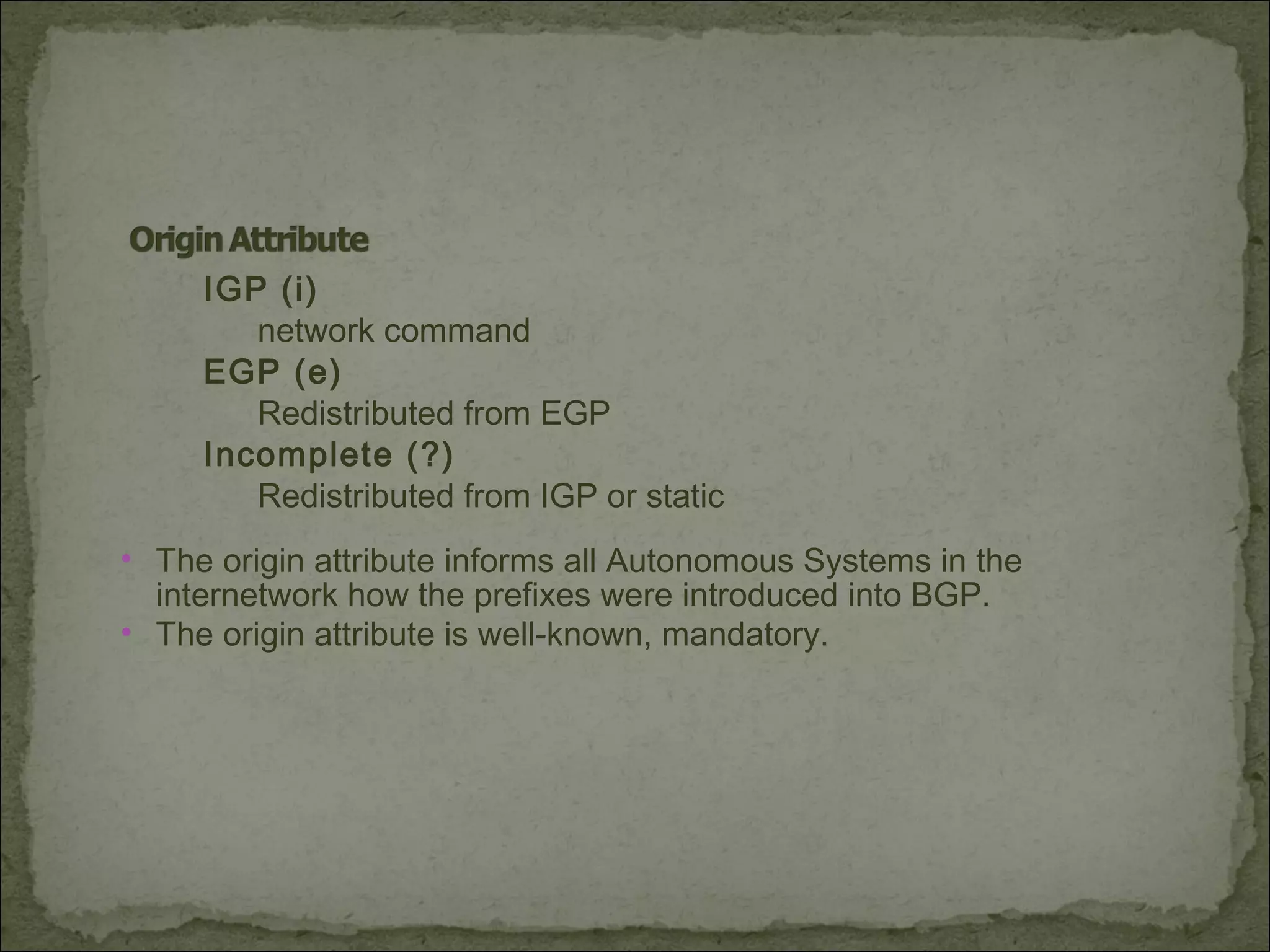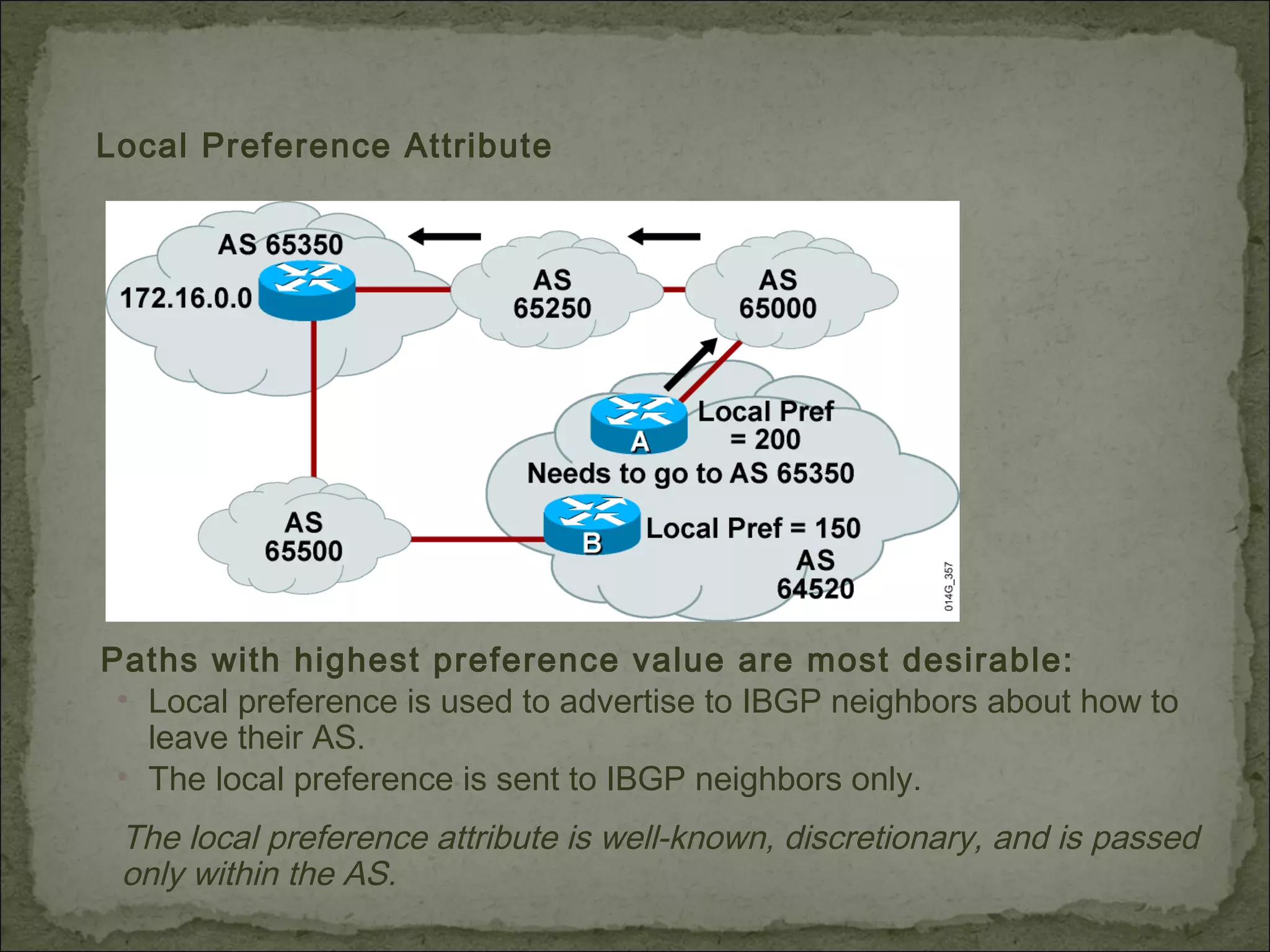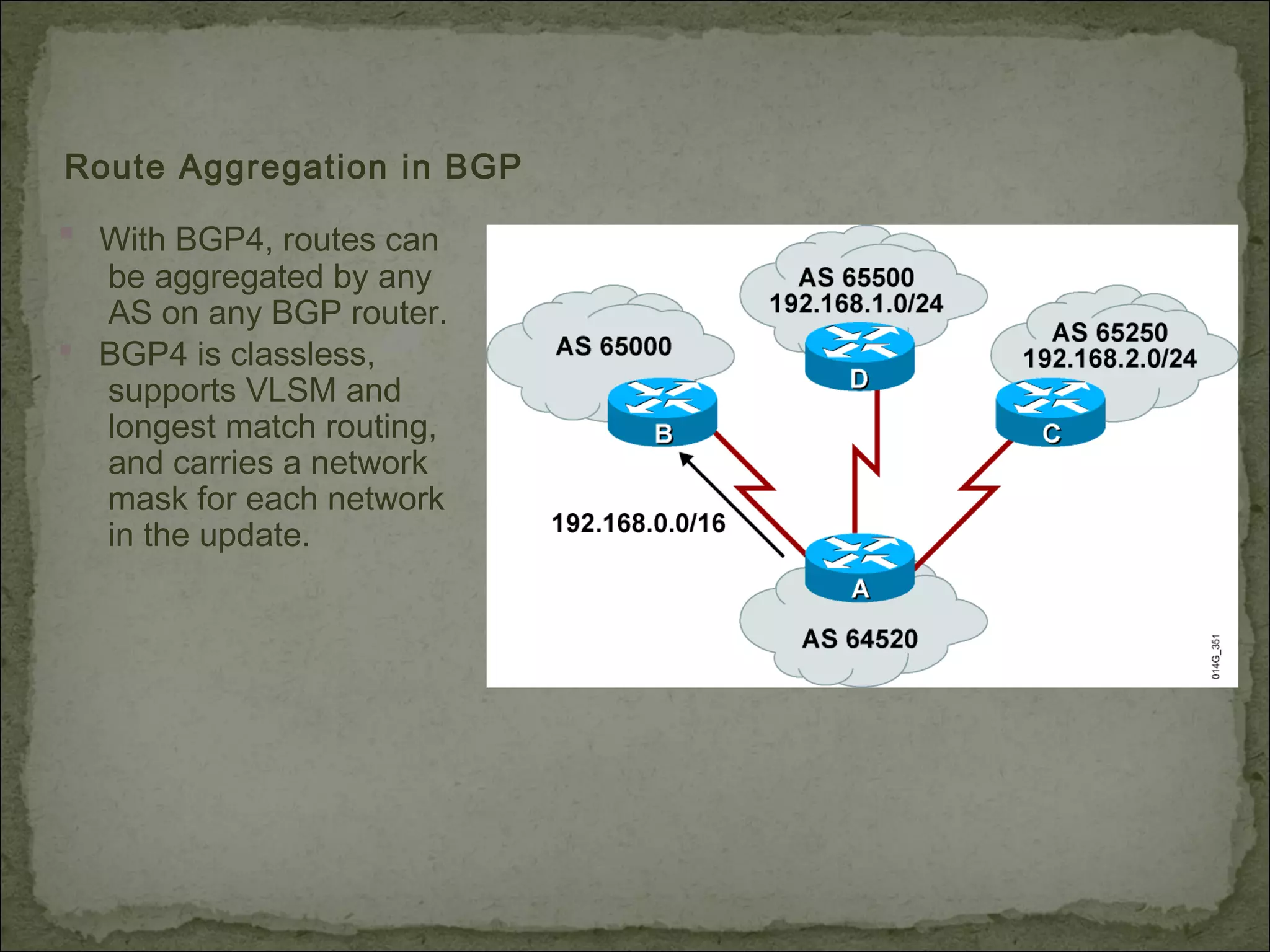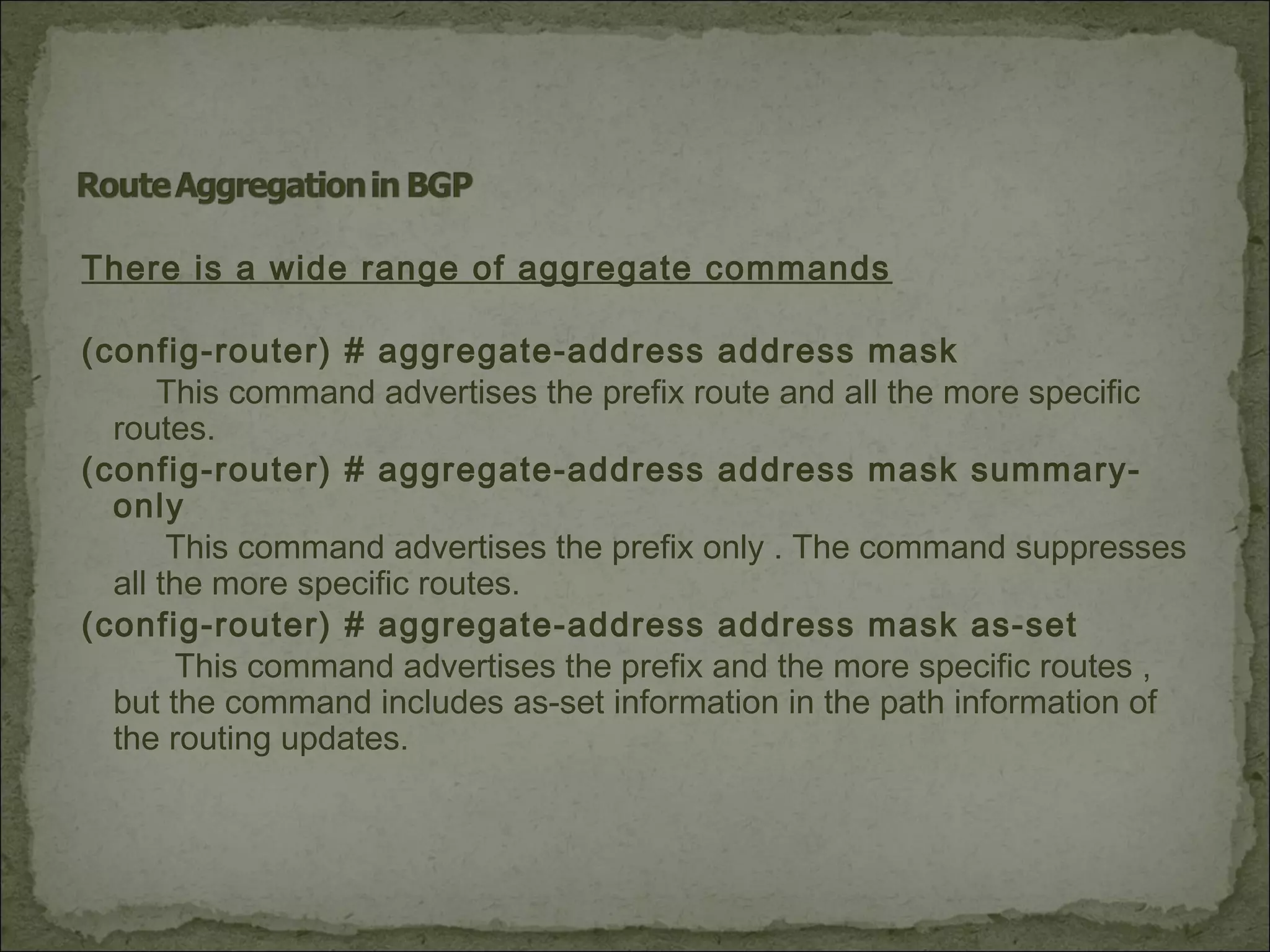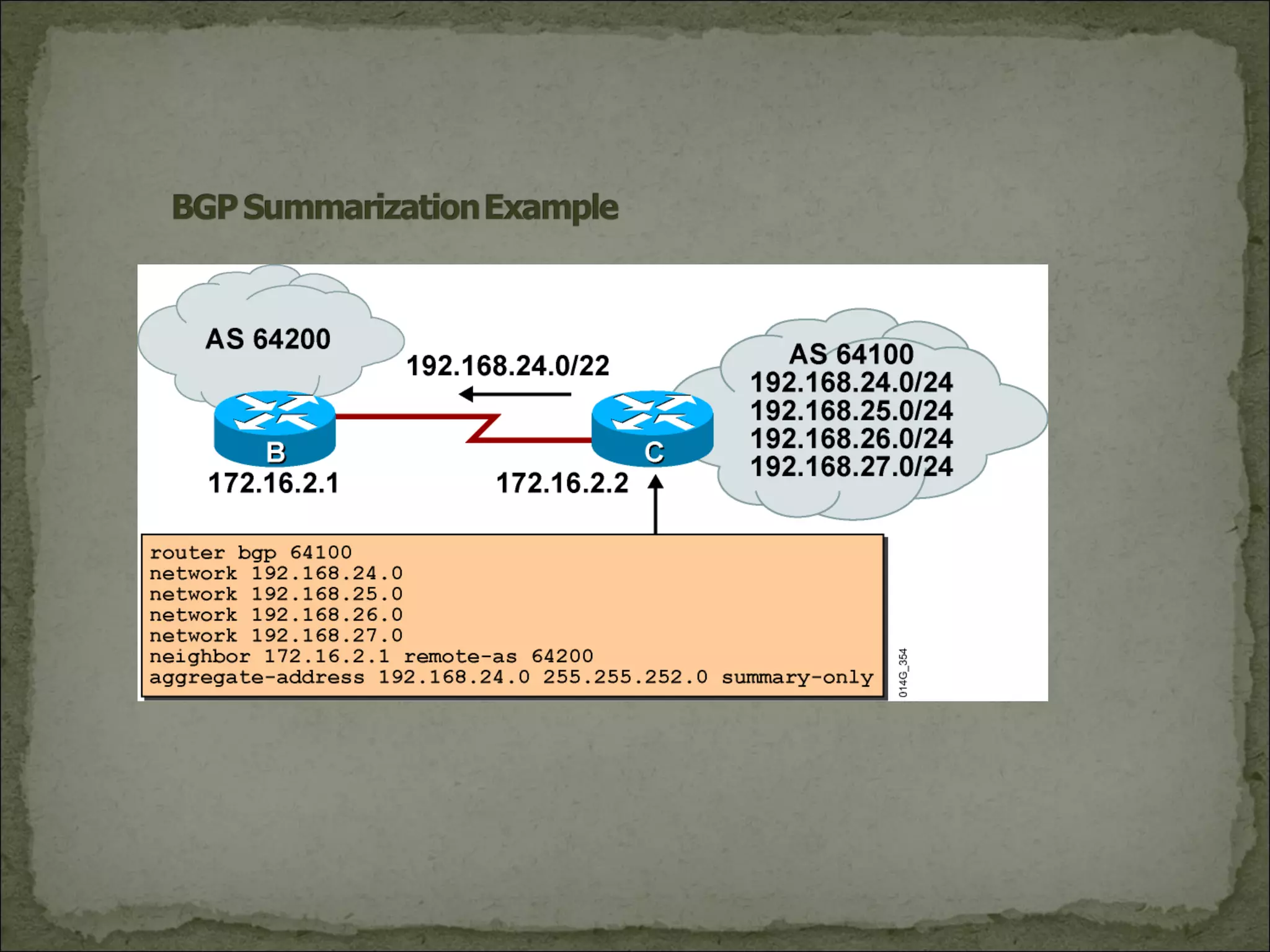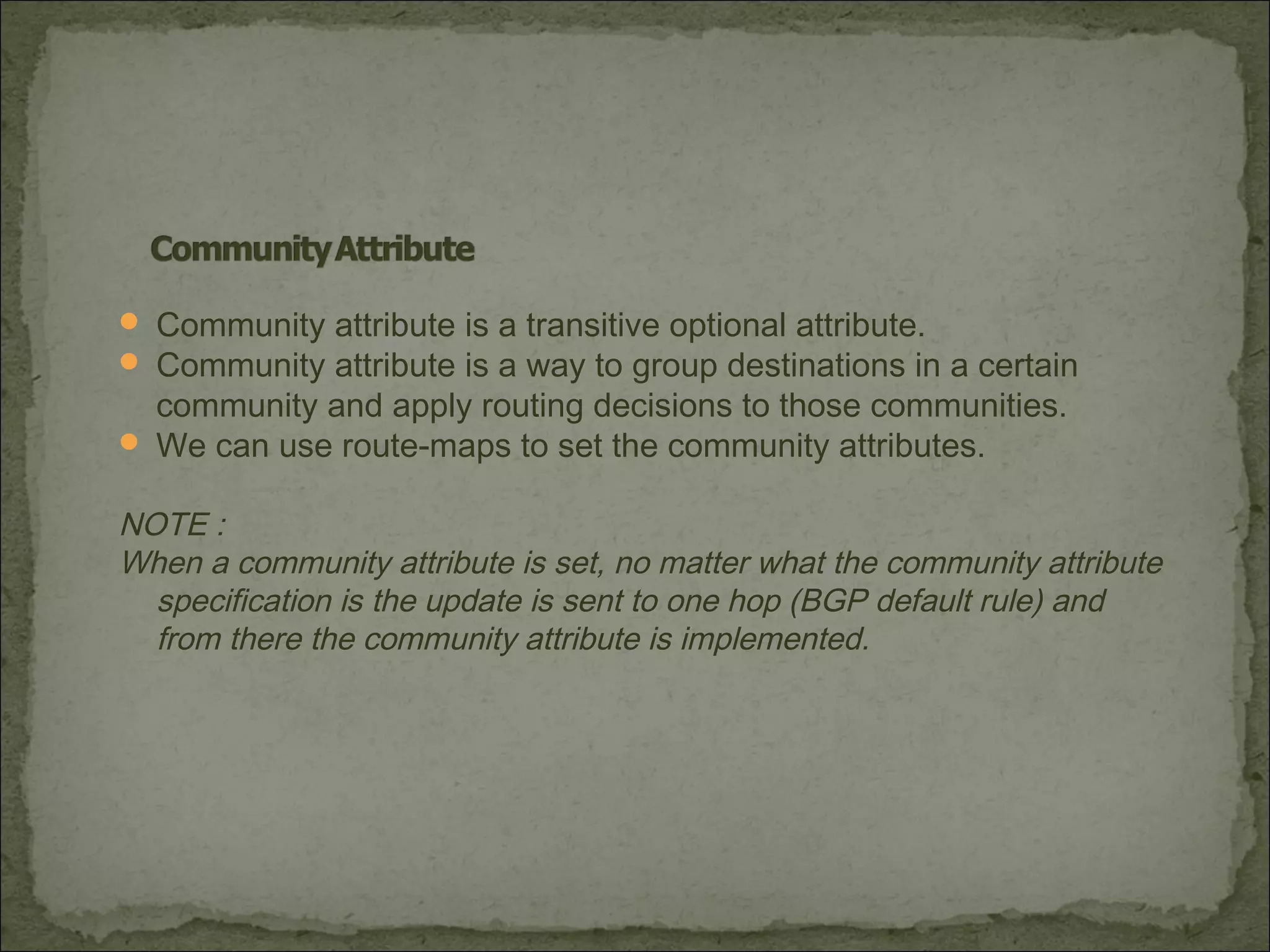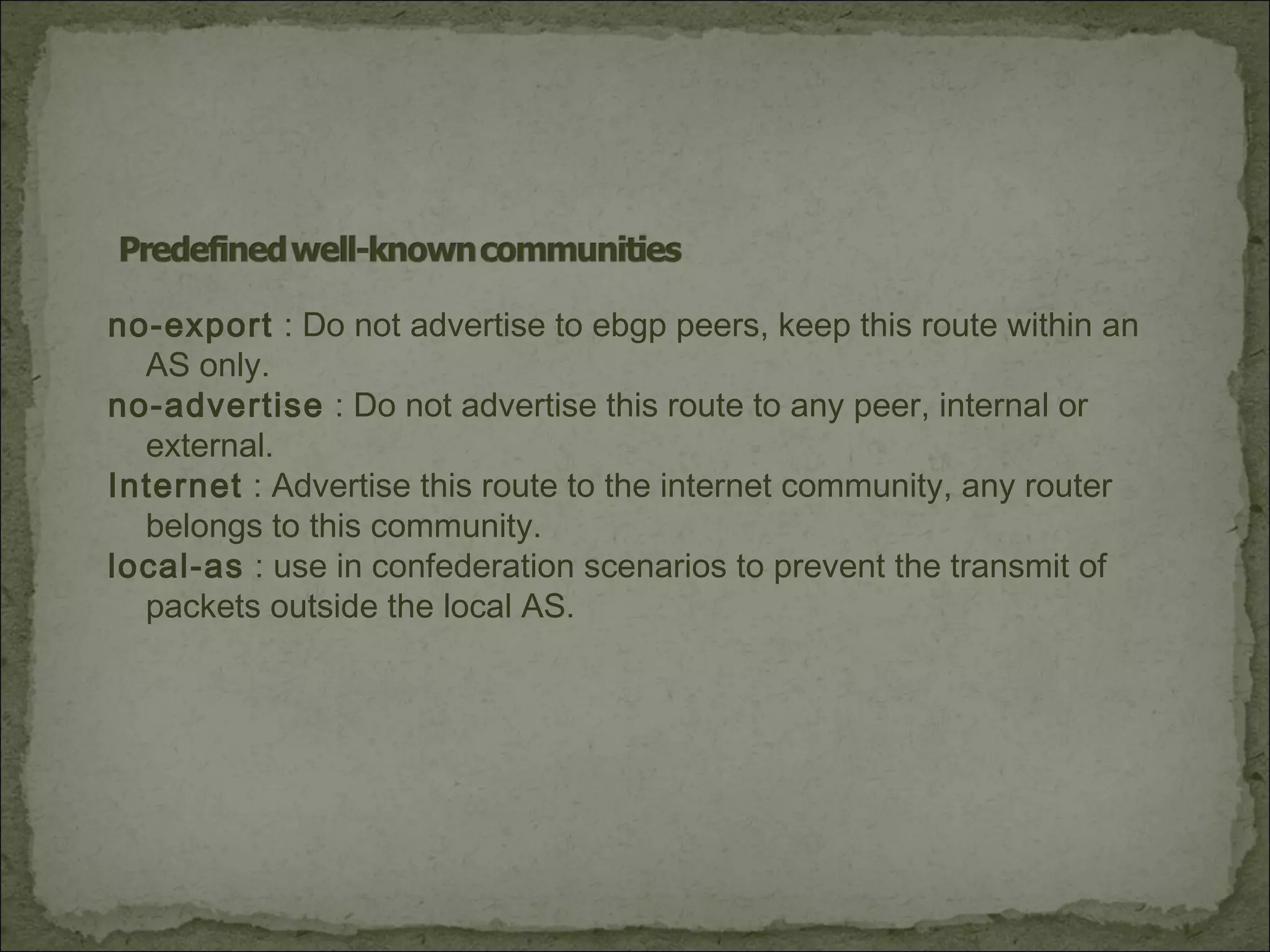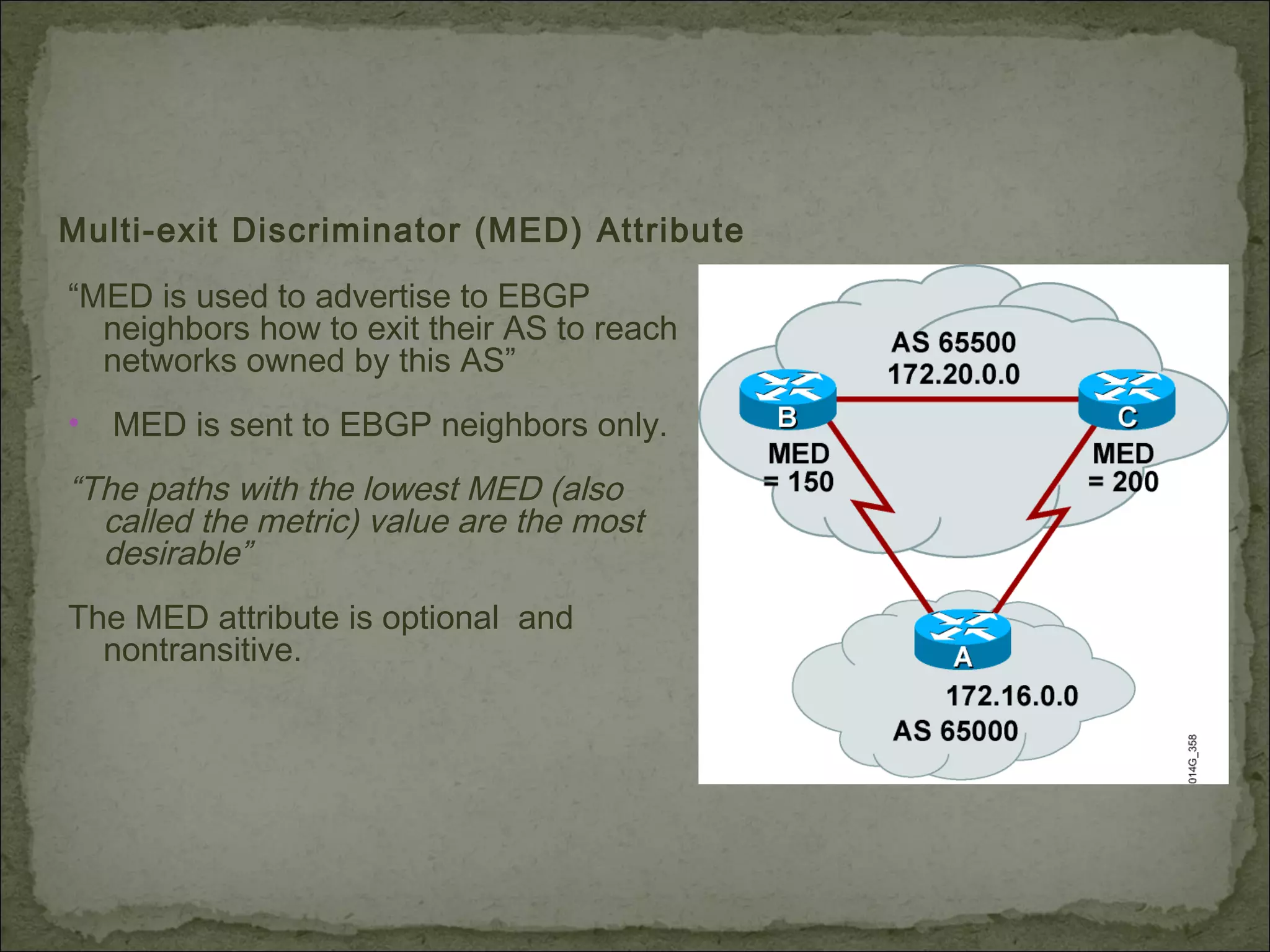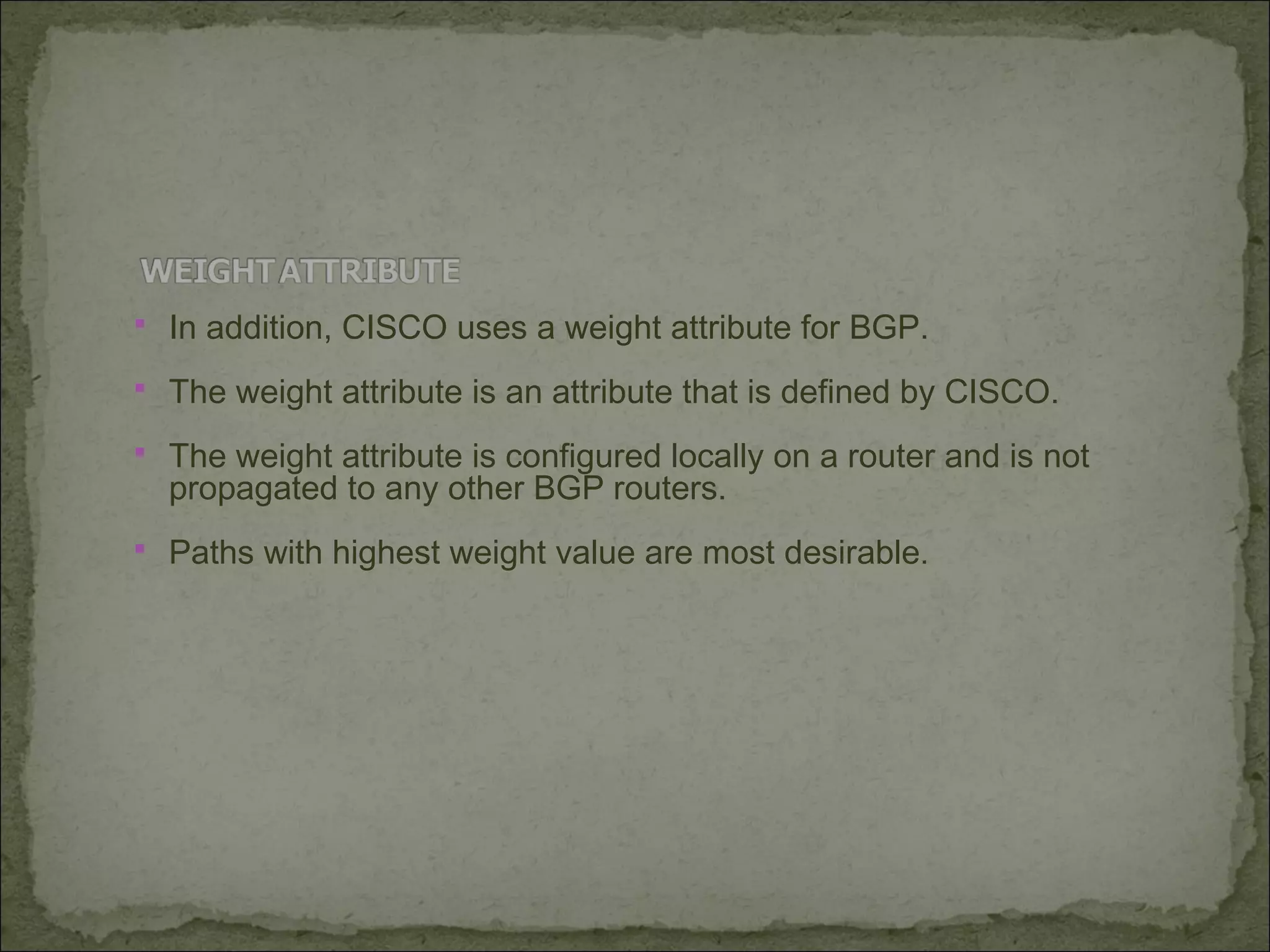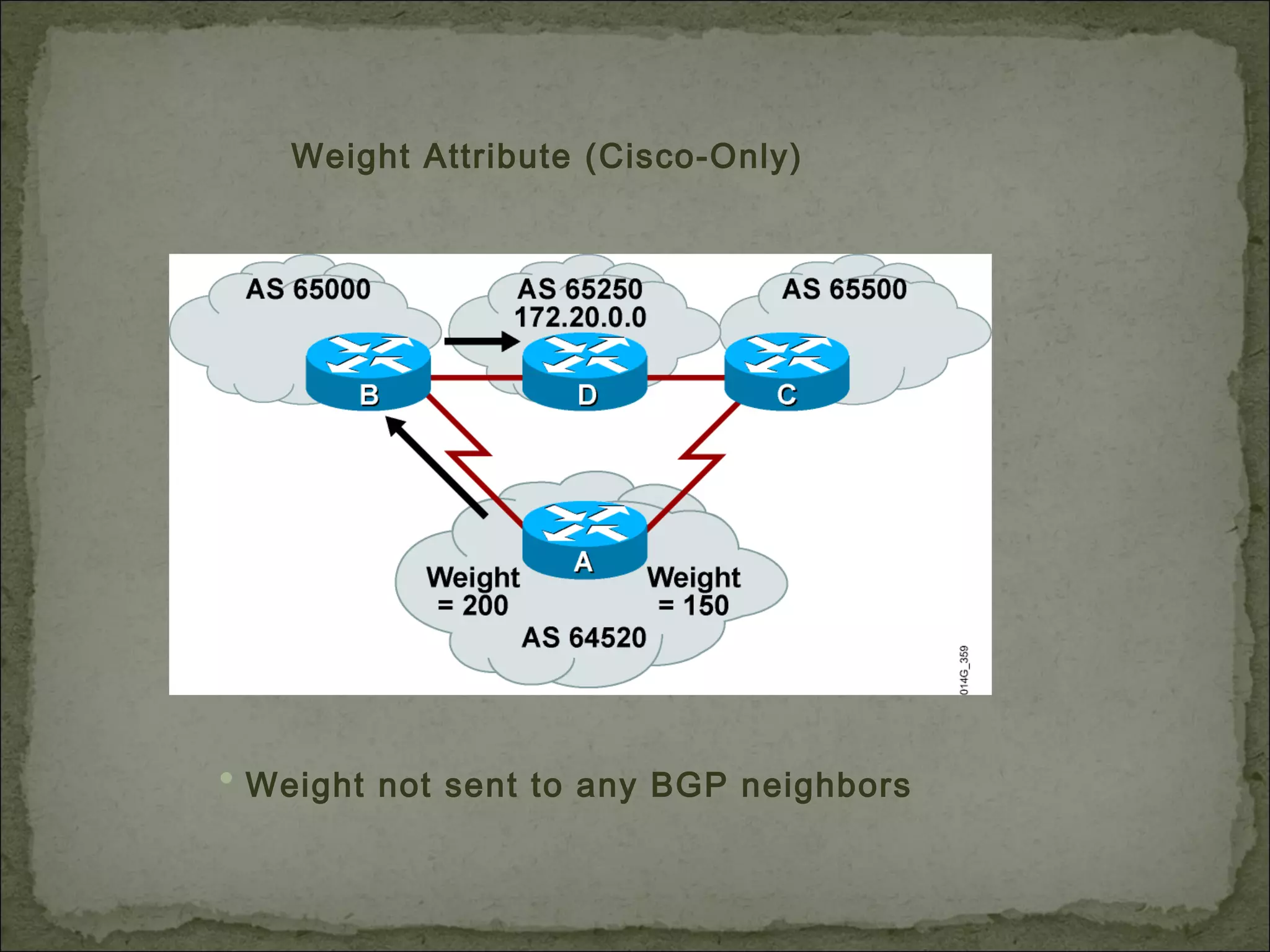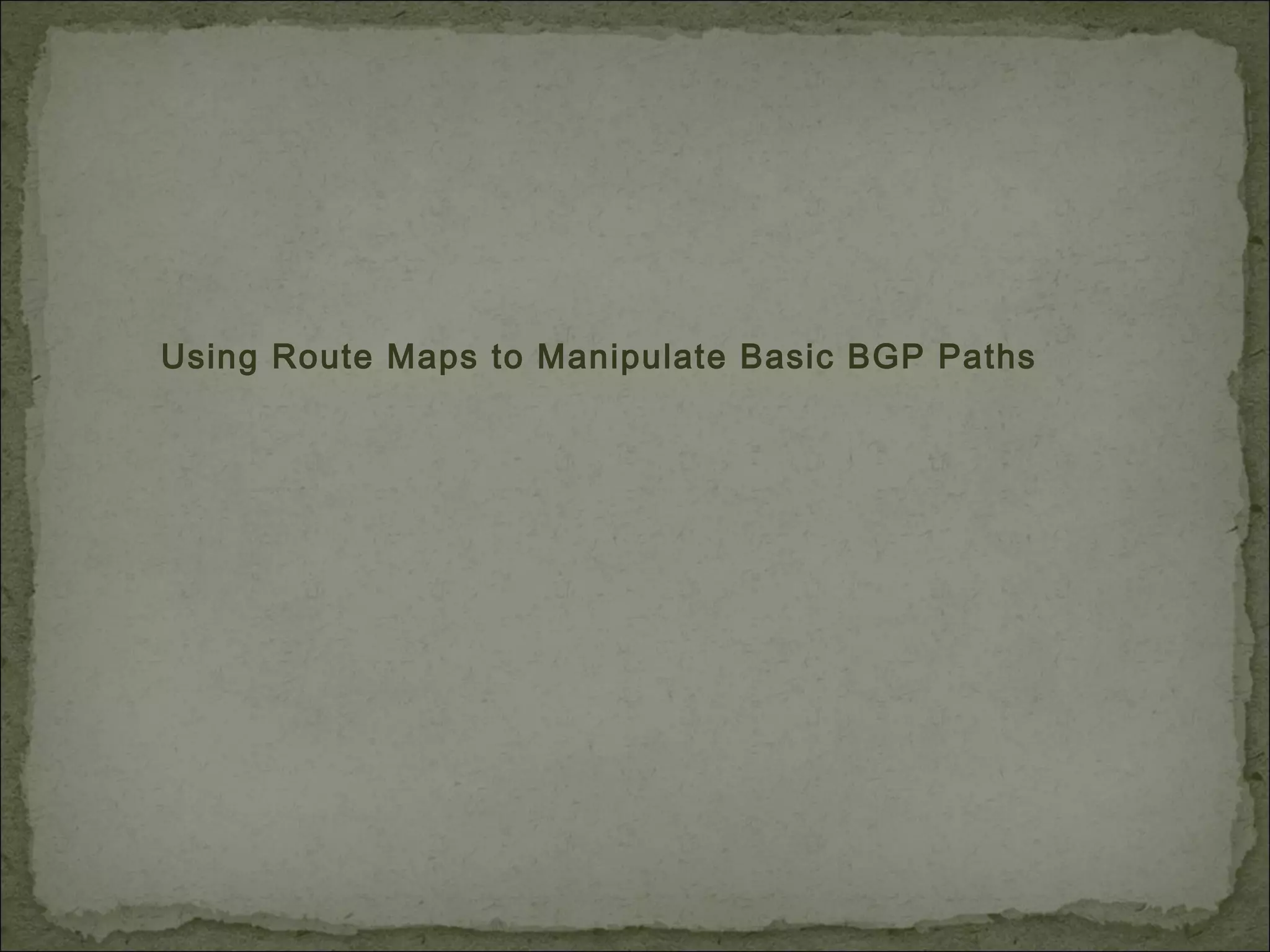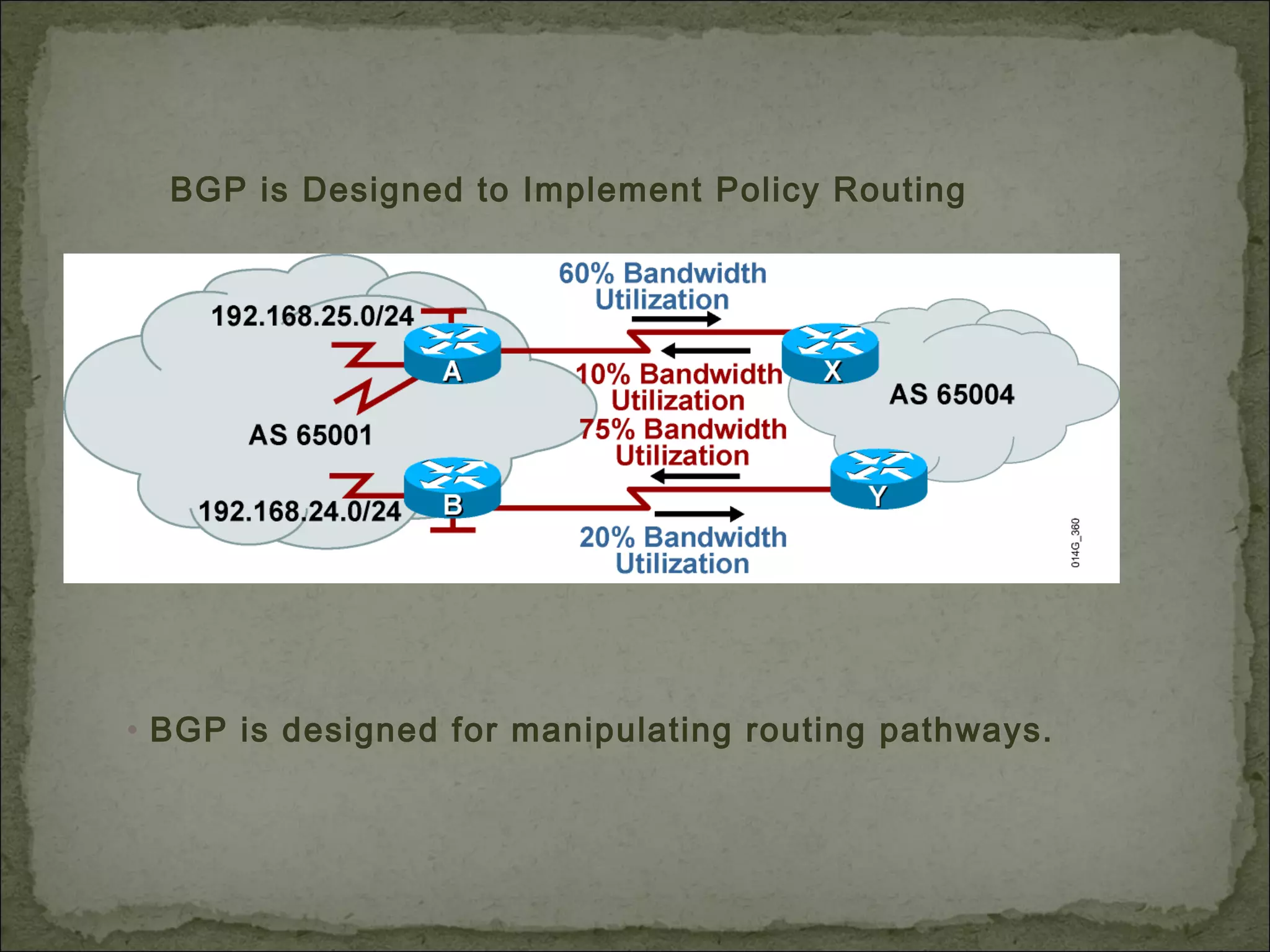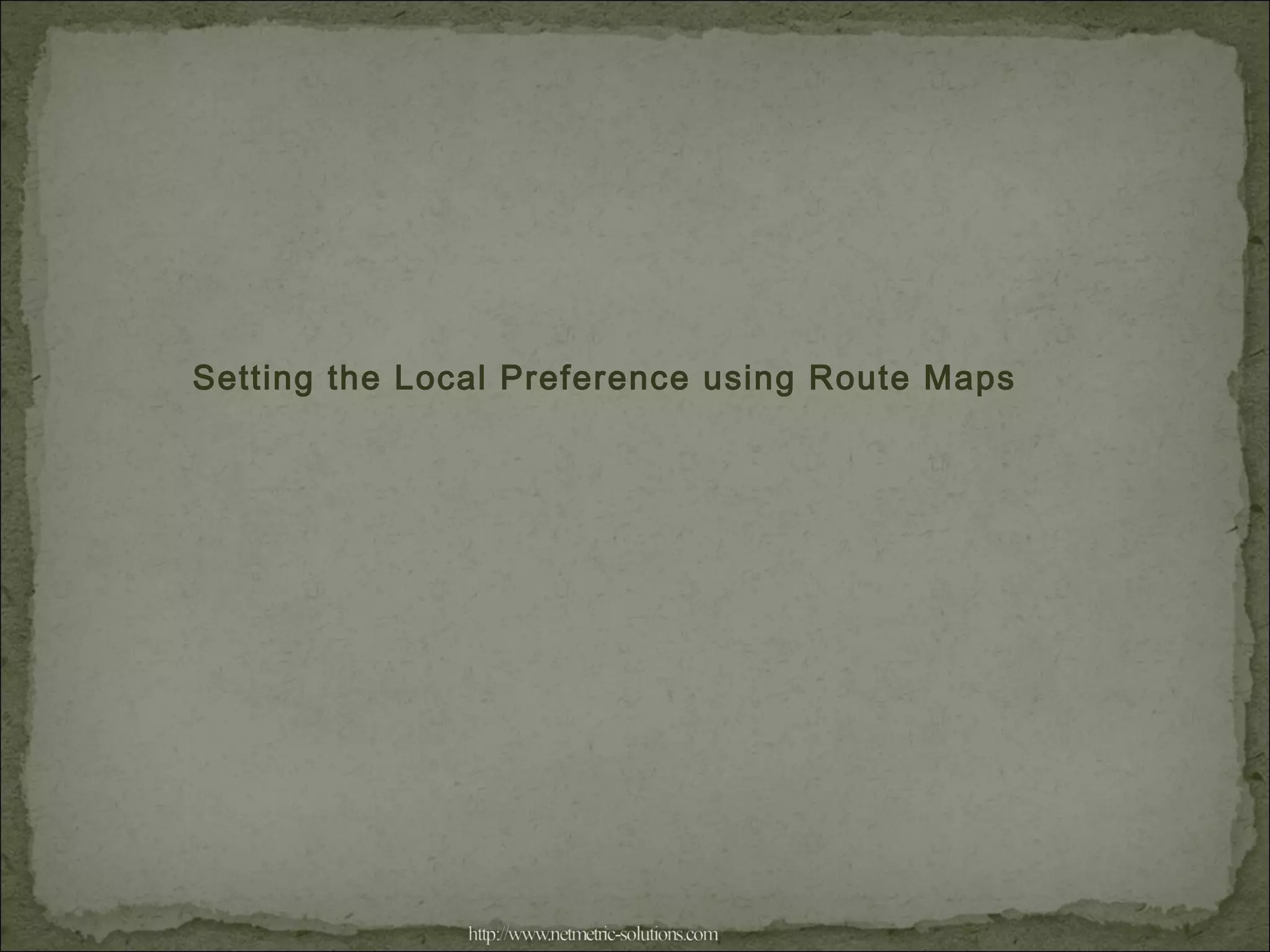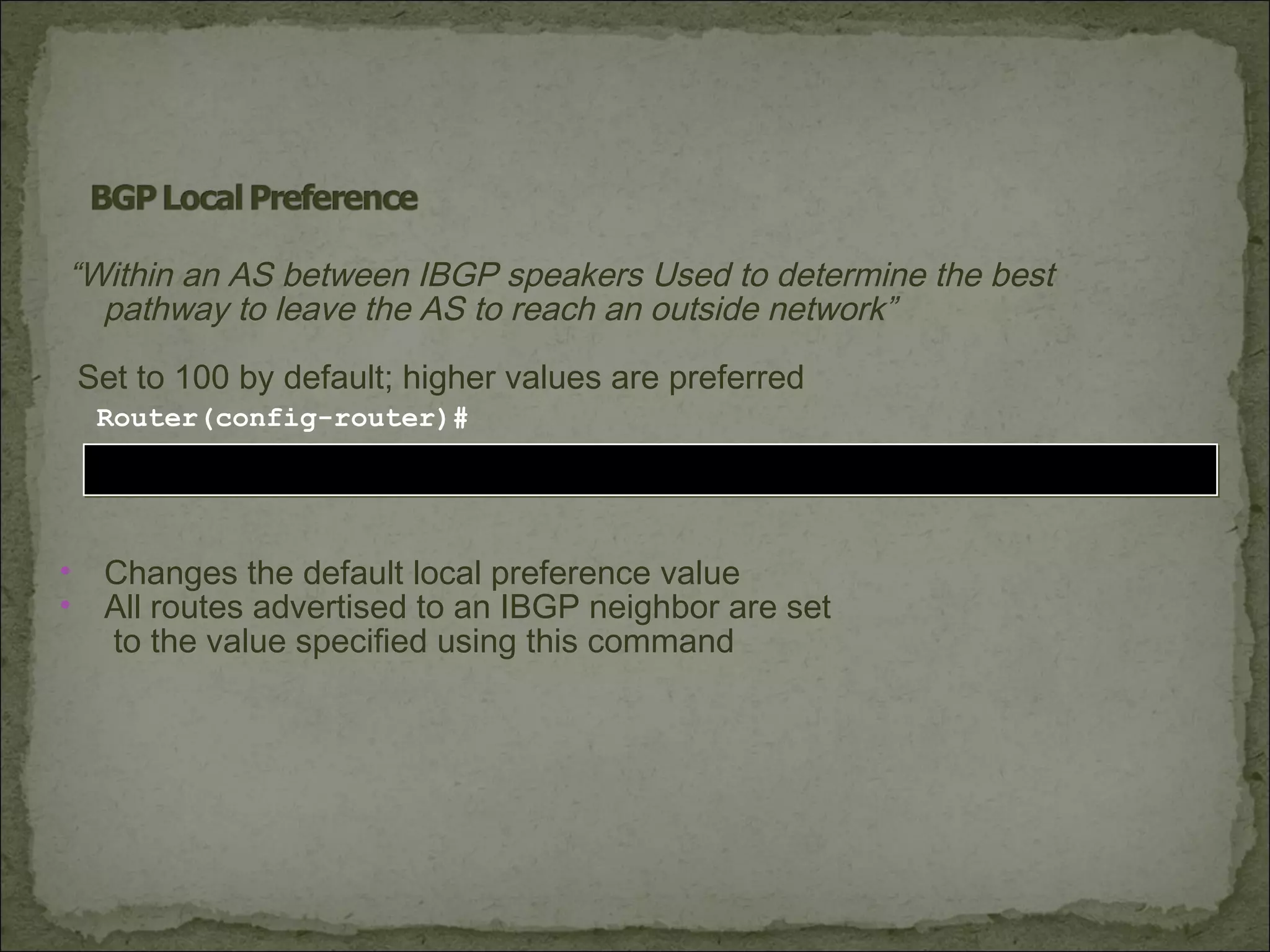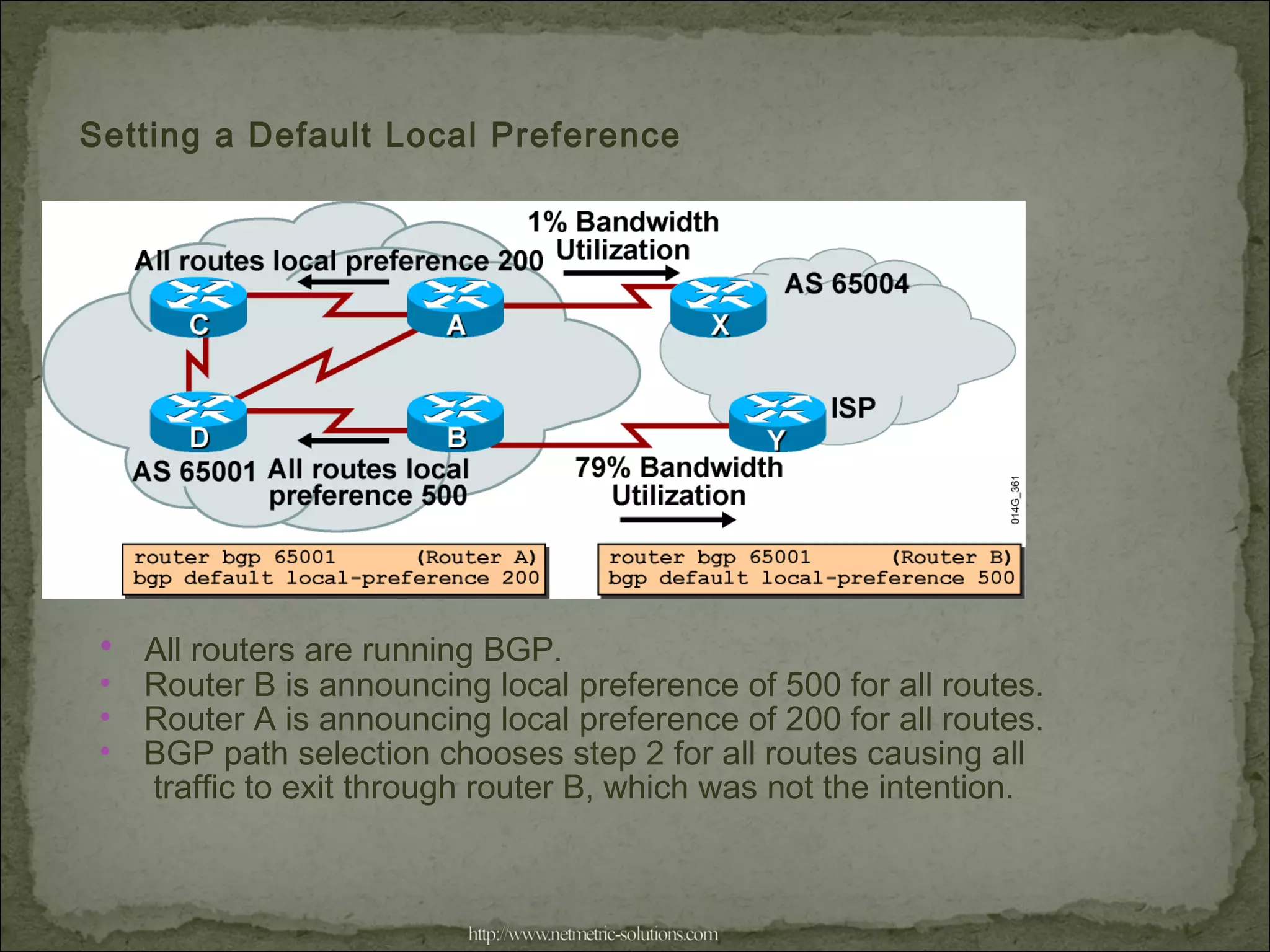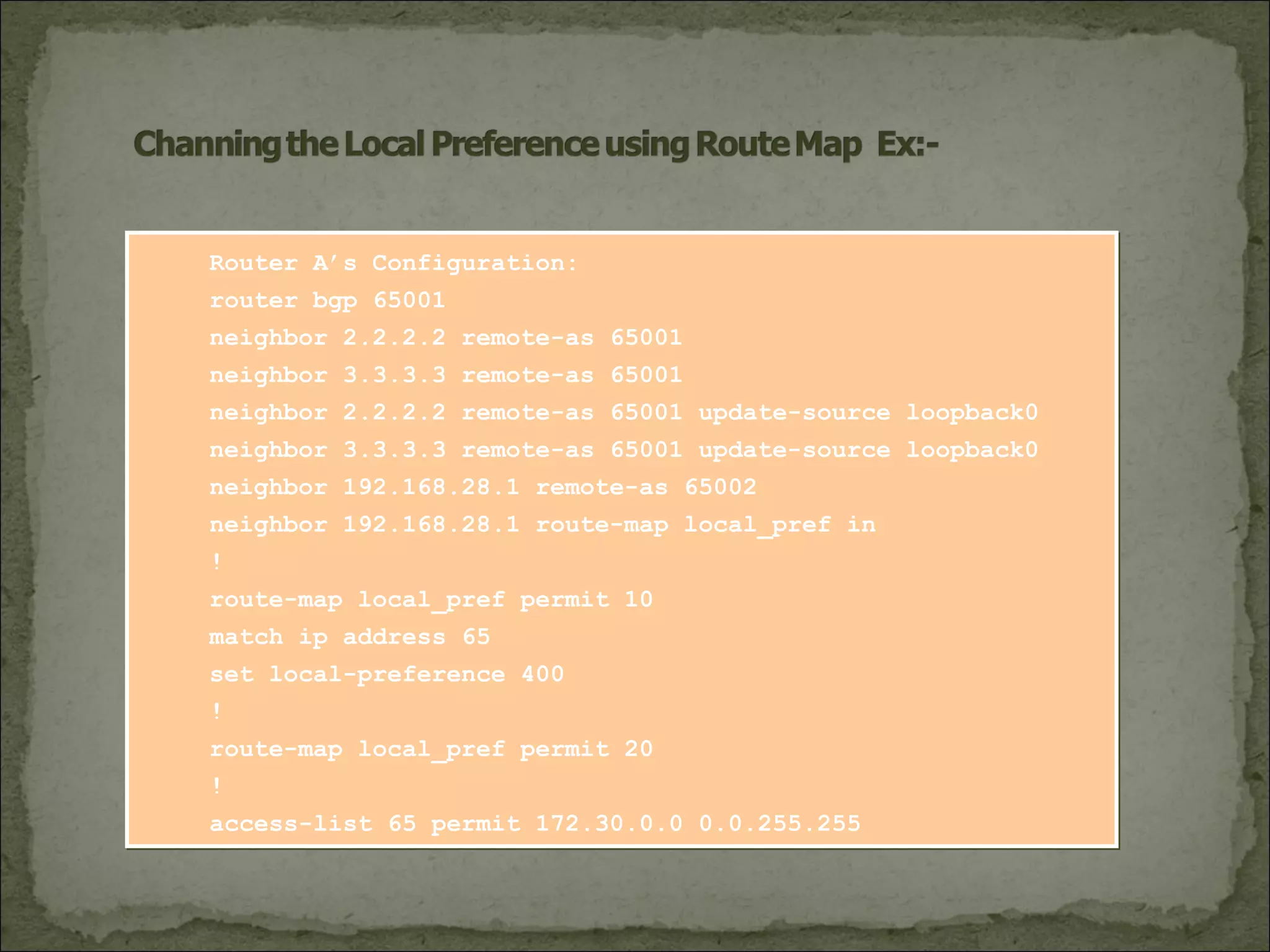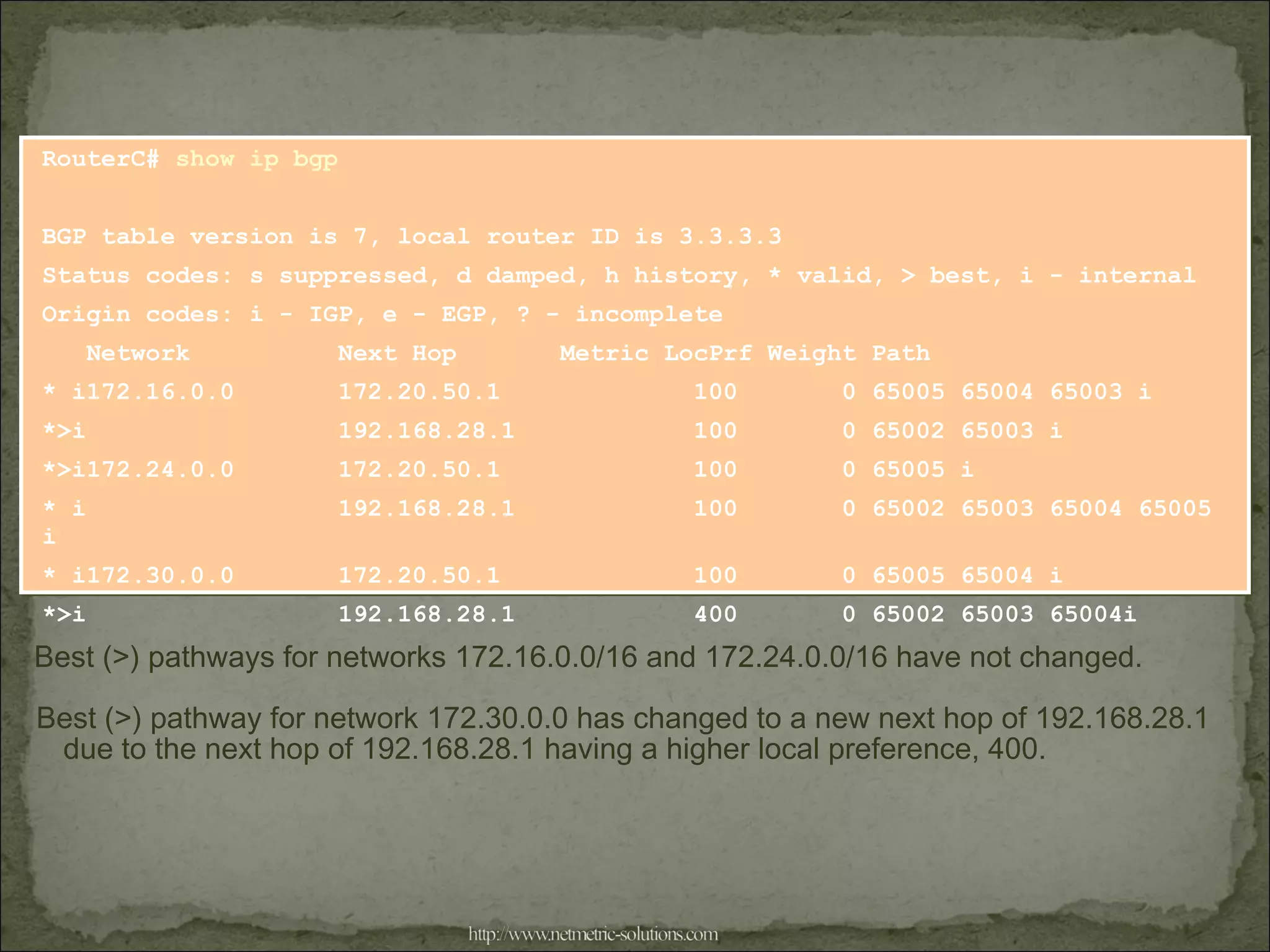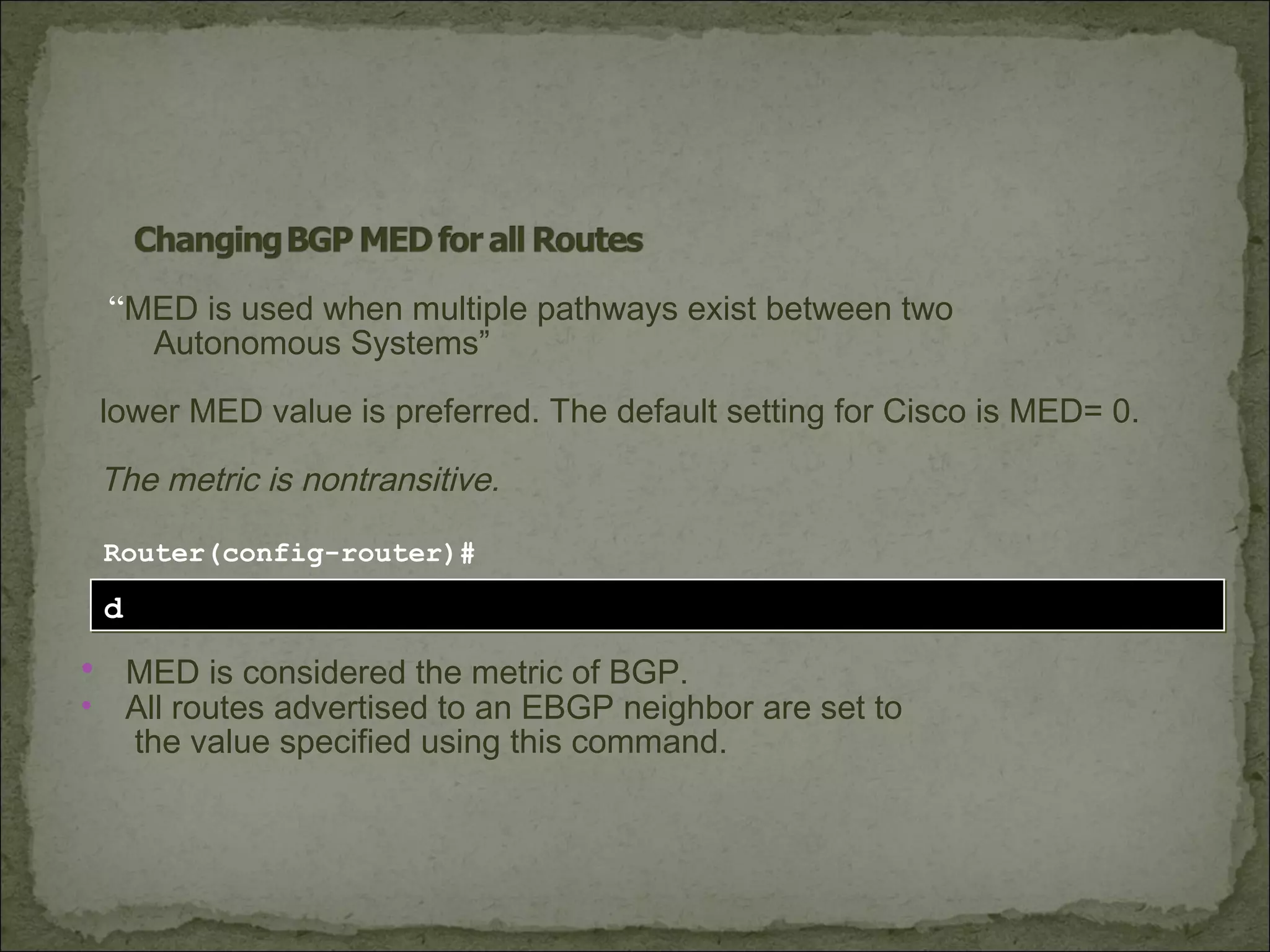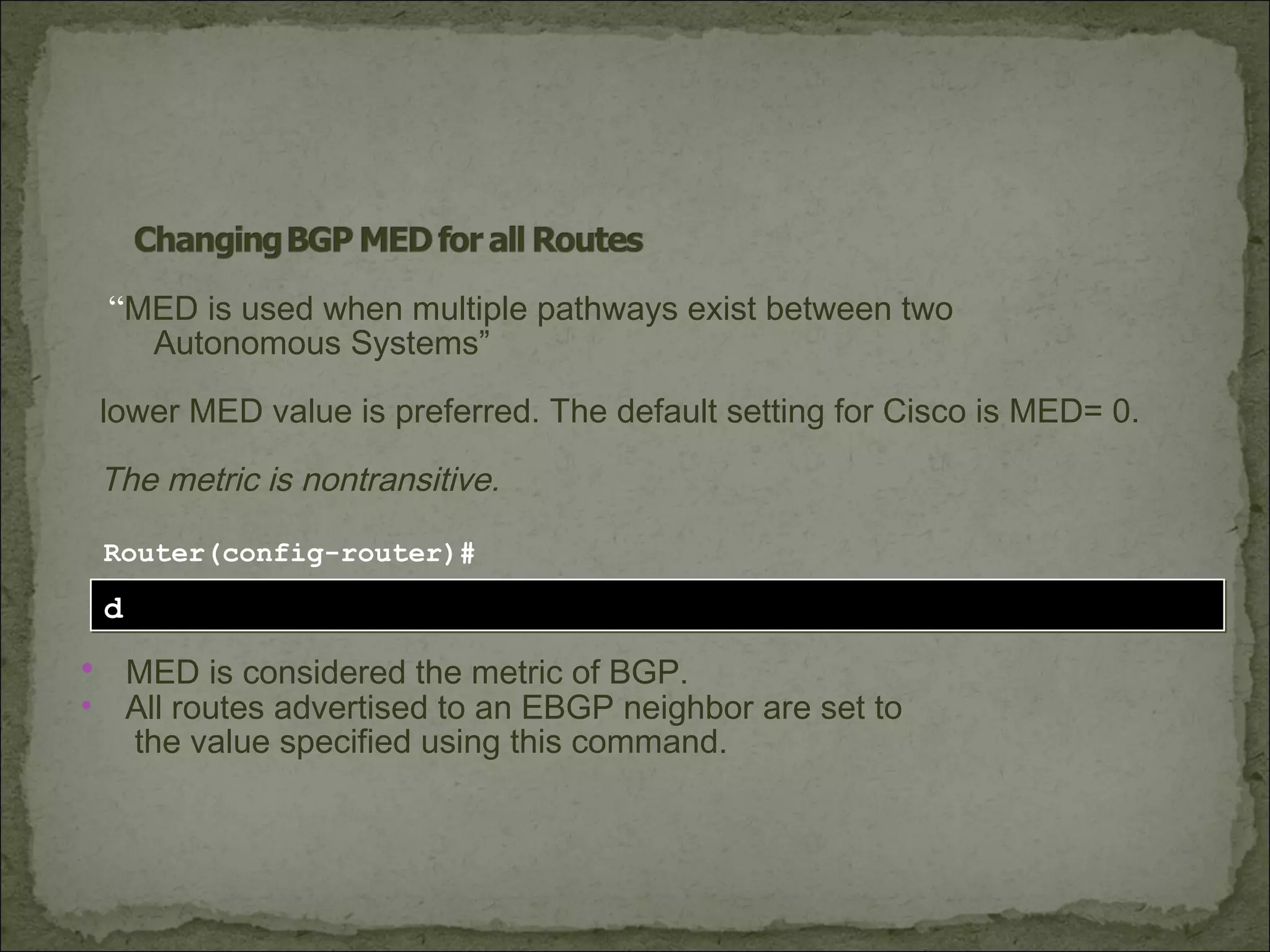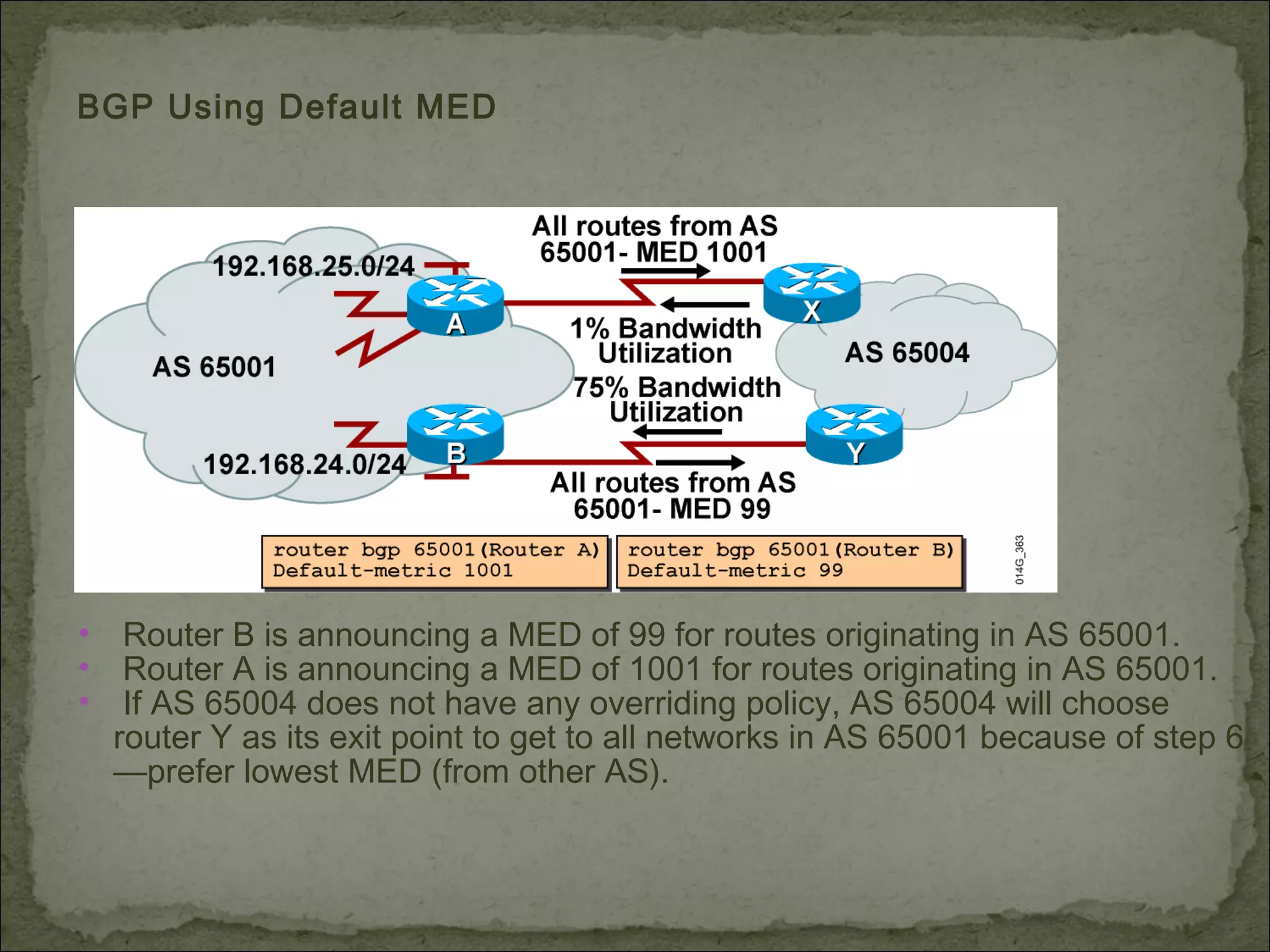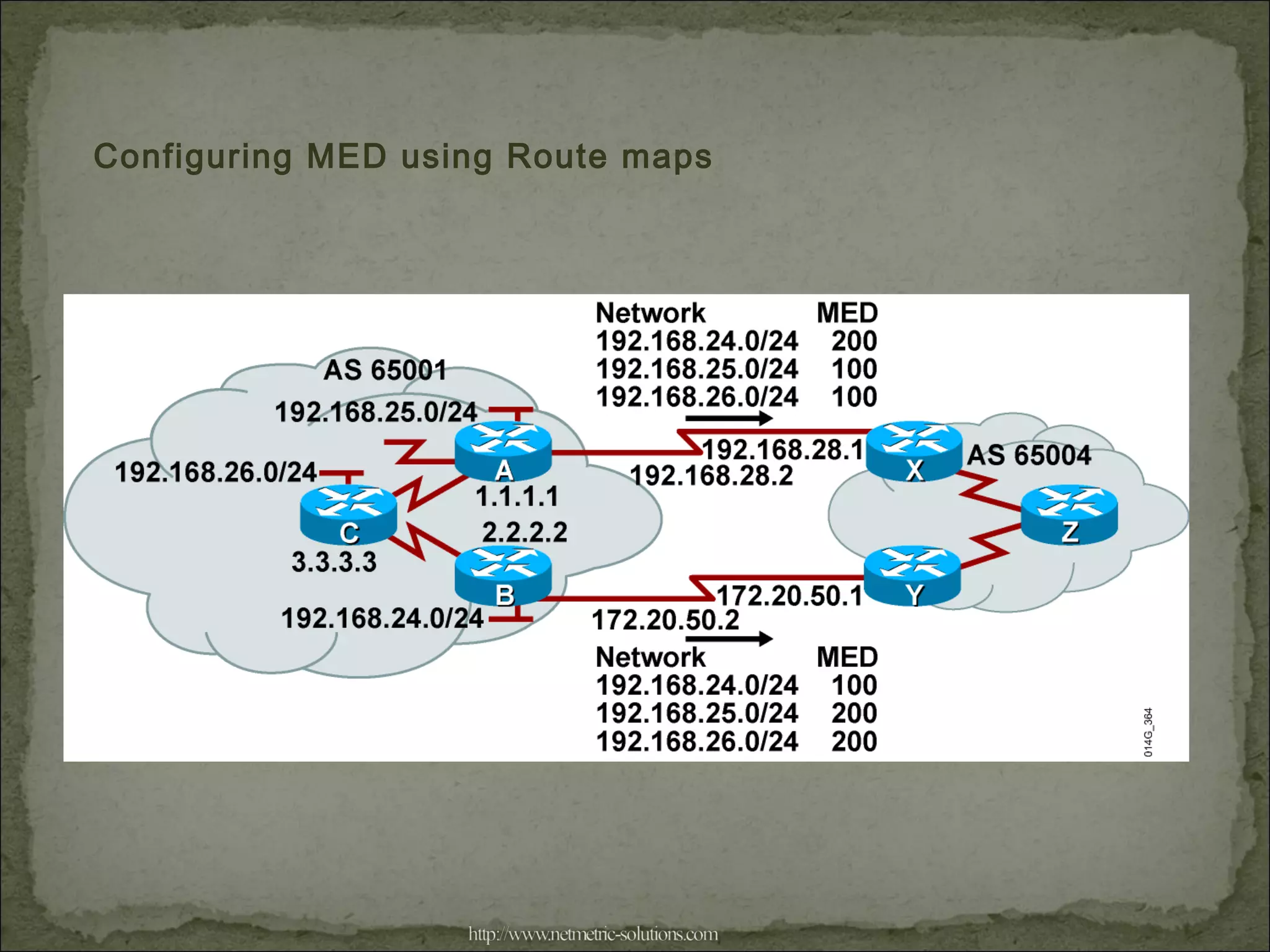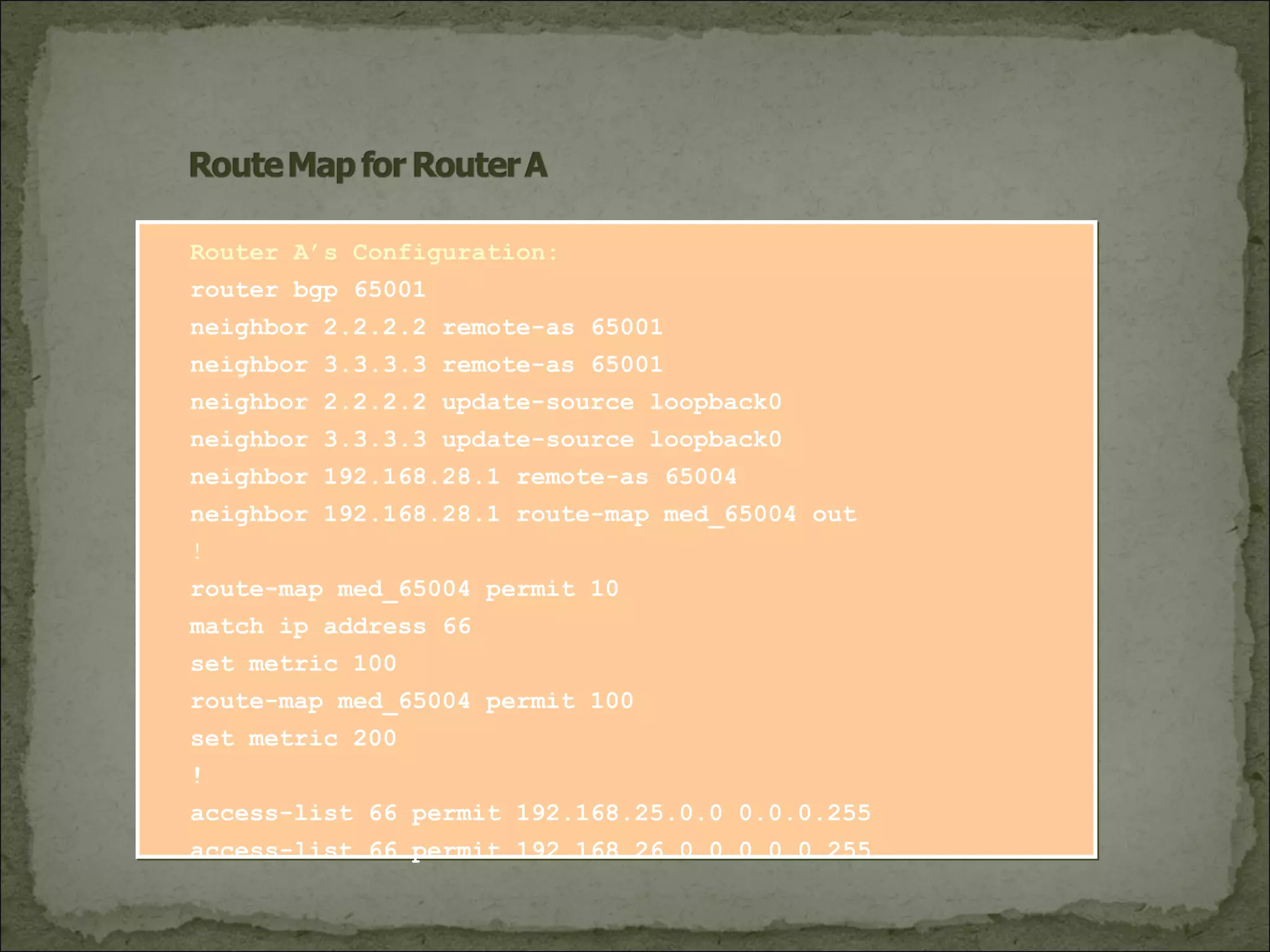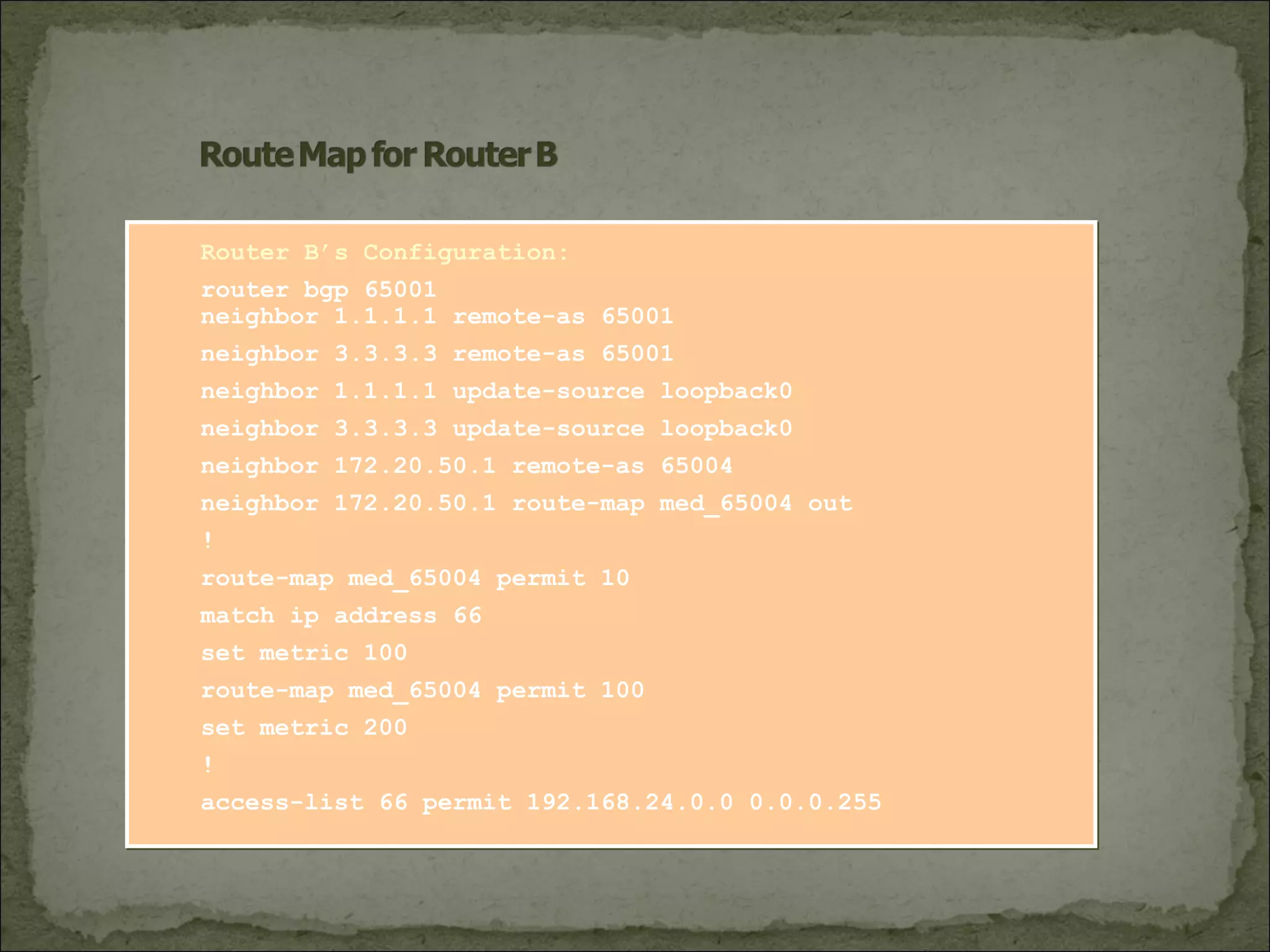BGP is an inter-AS routing protocol used to exchange routing and reachability information between autonomous systems on the internet. It uses path vector routing rather than distance vector, and carries richer metric information than IGPs. BGP configurations establish neighbor relationships between routers in different ASes to exchange routing updates.

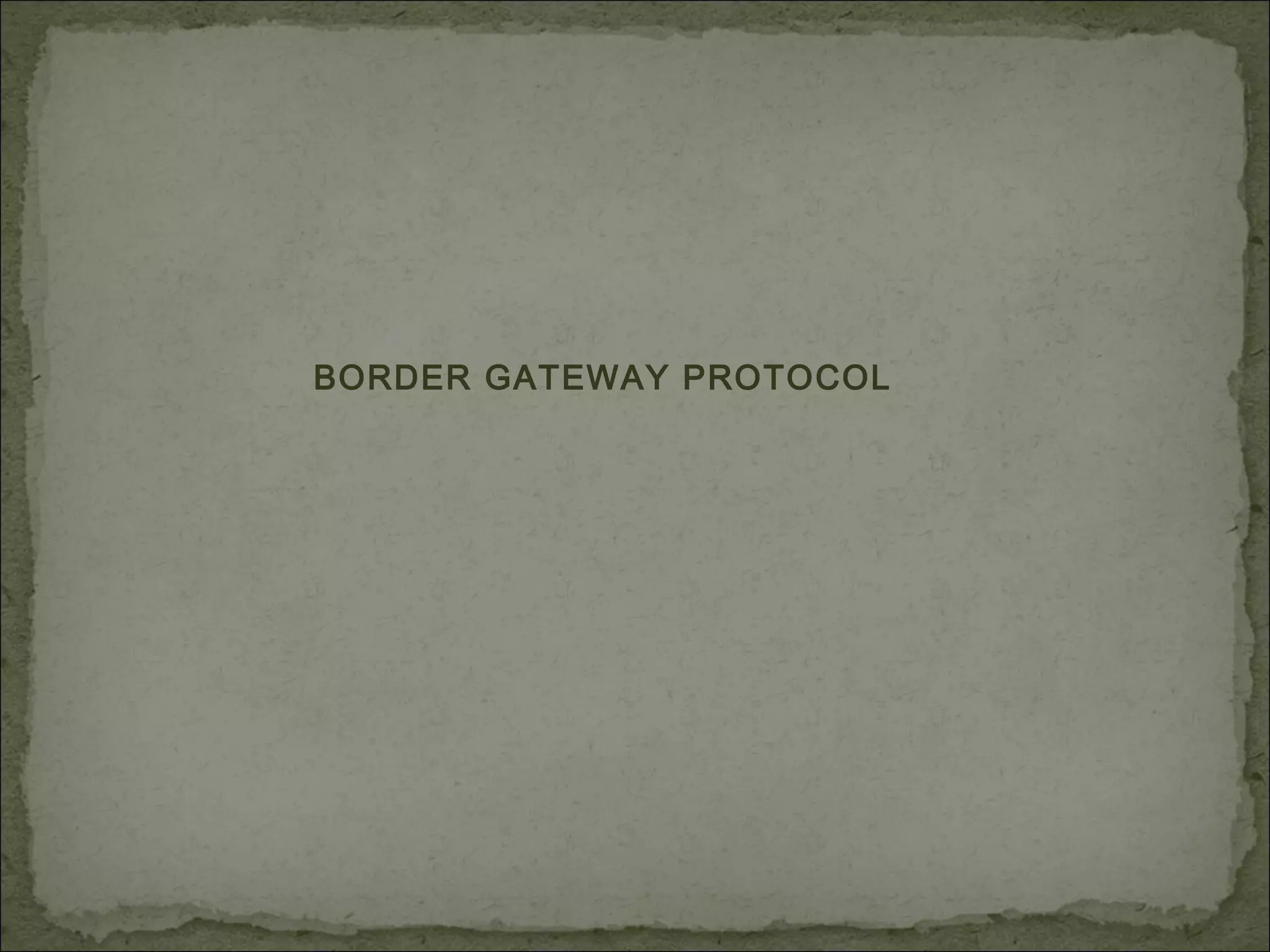
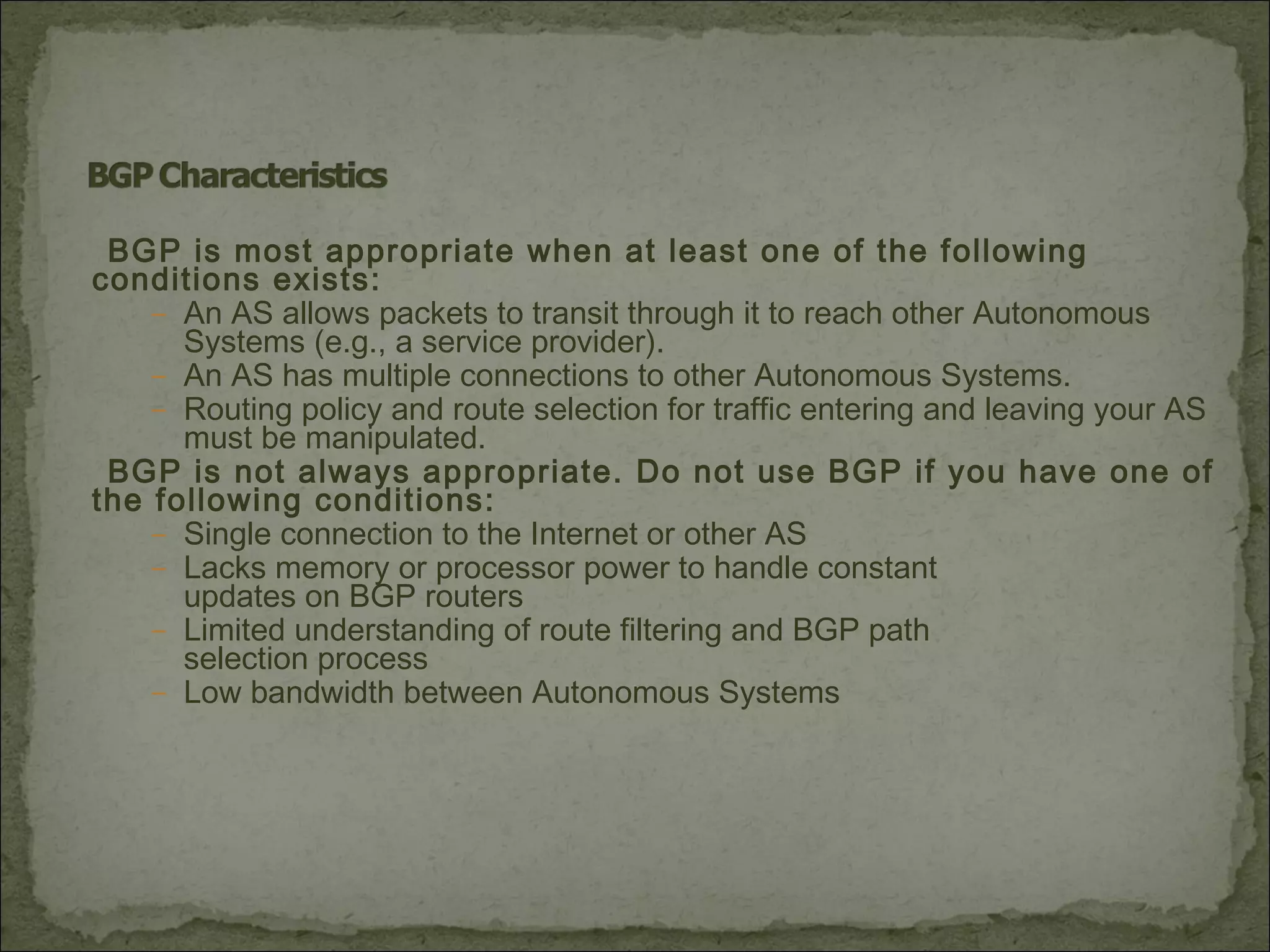
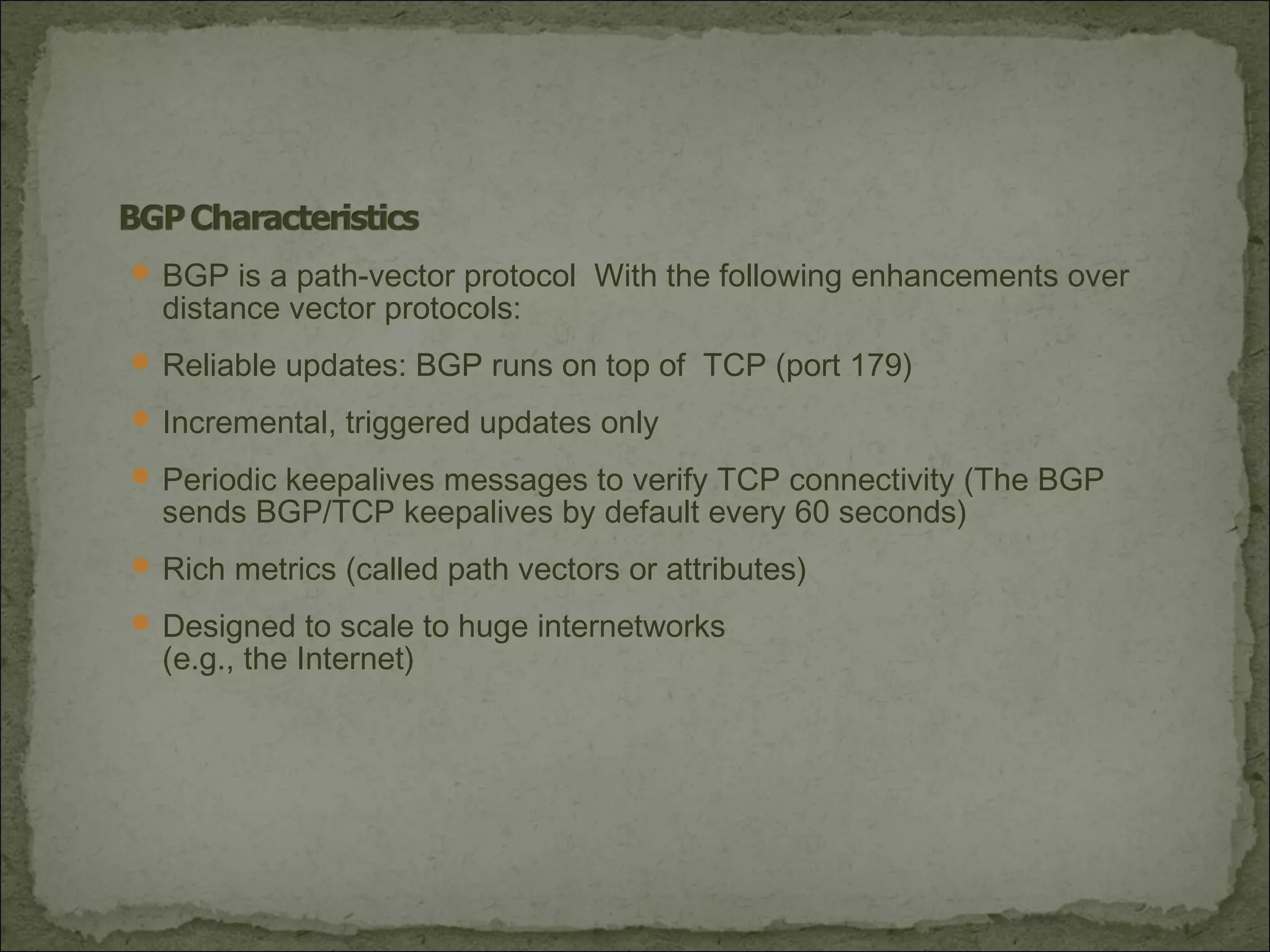
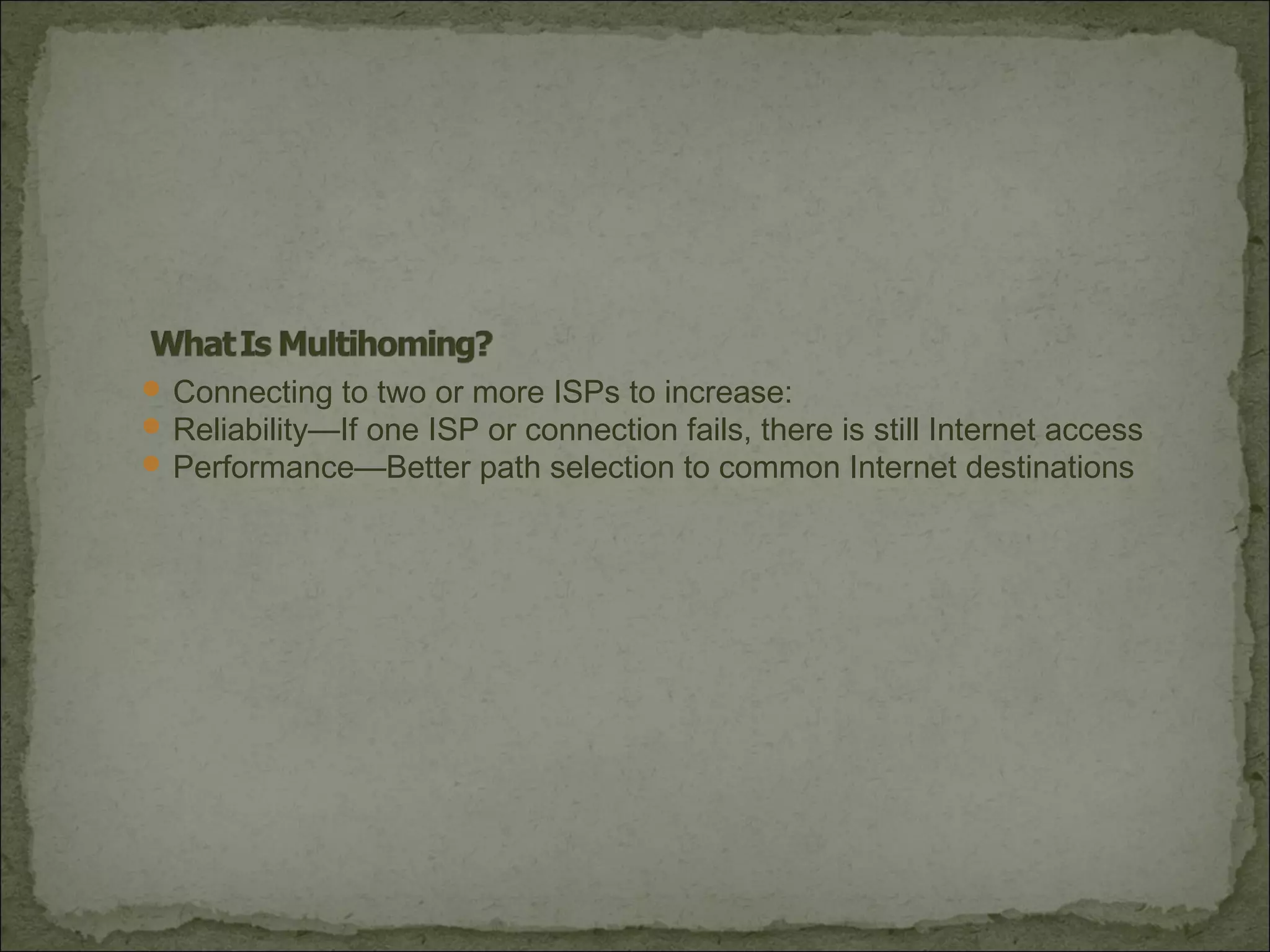

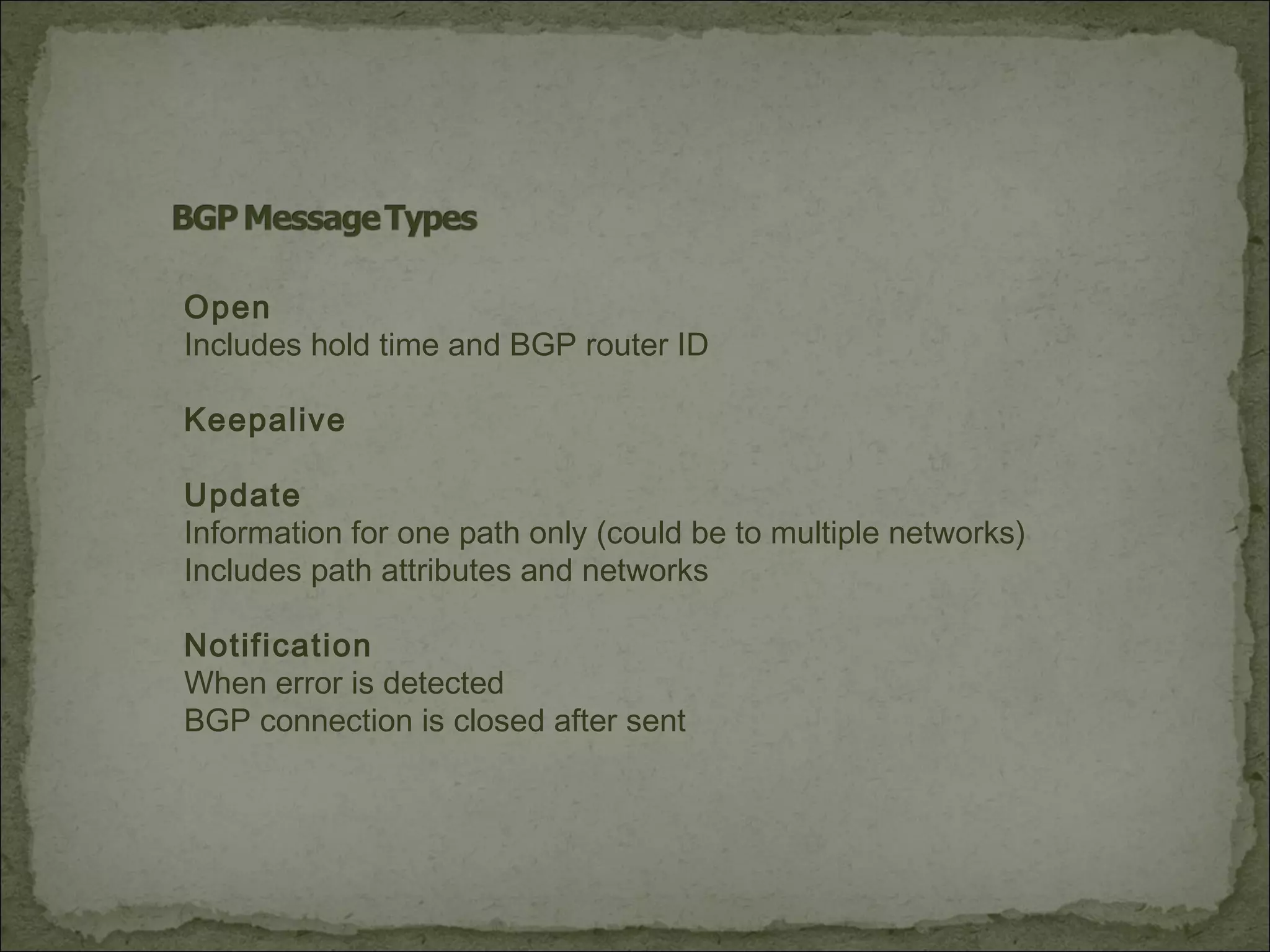
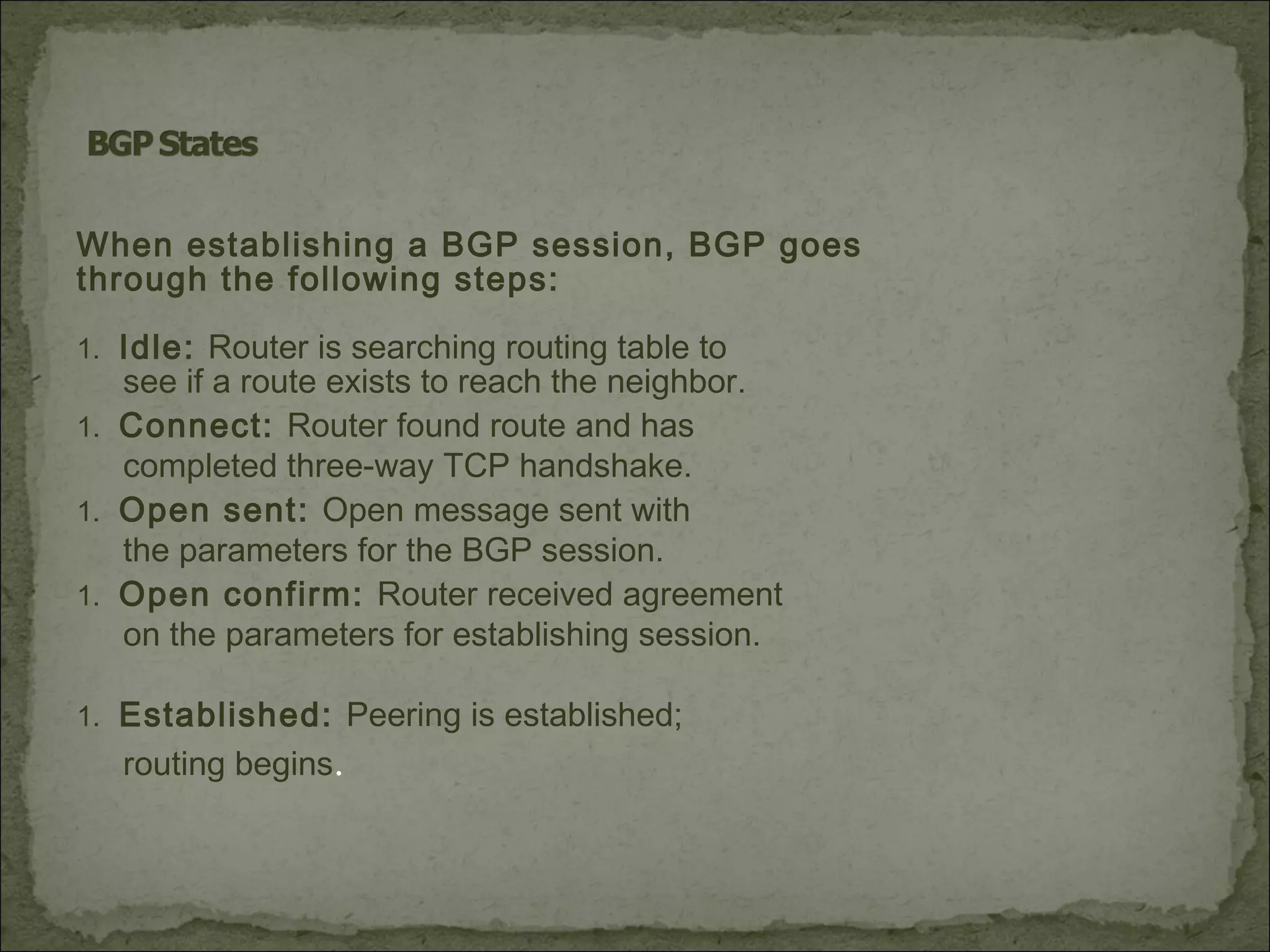
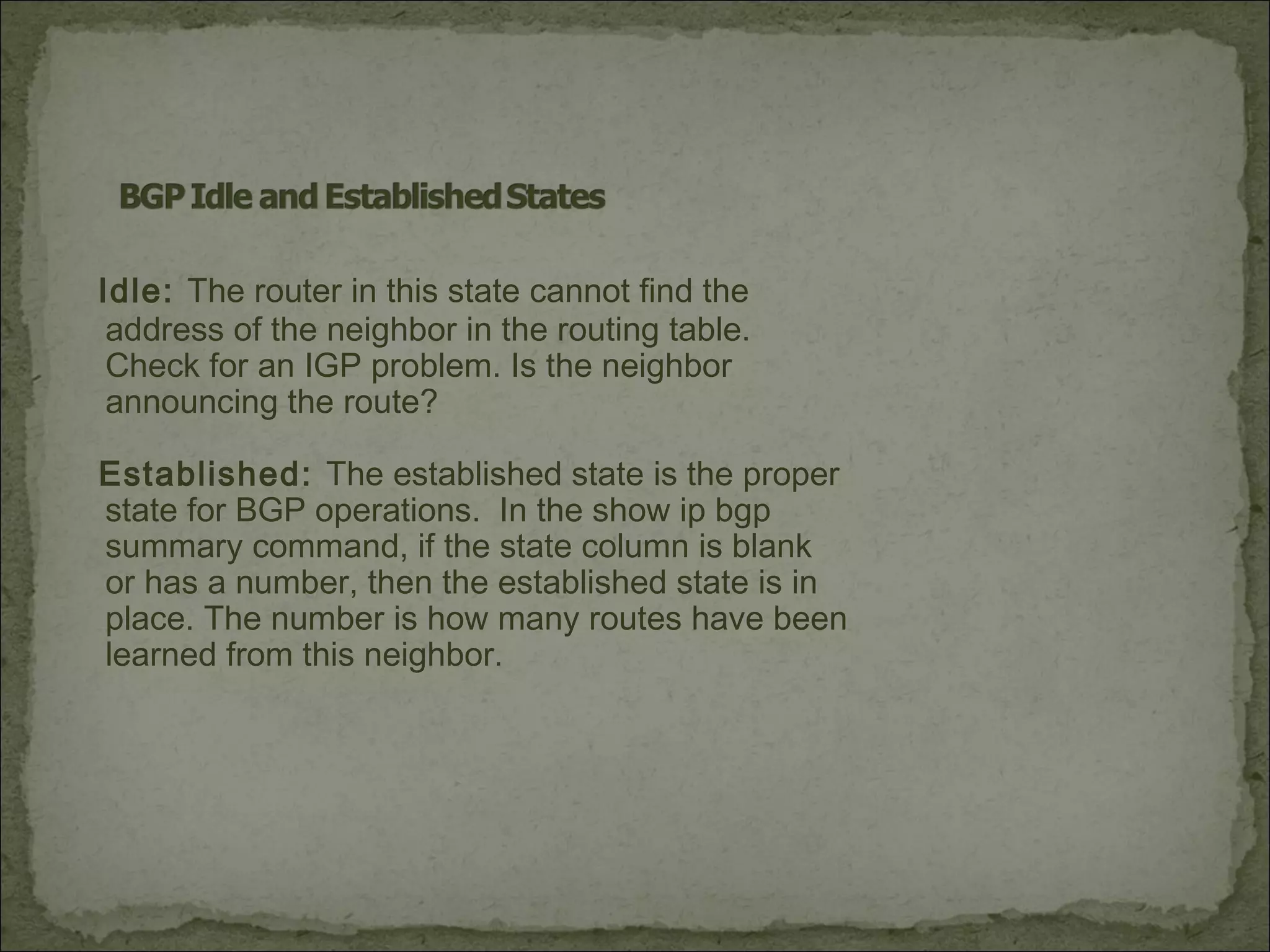
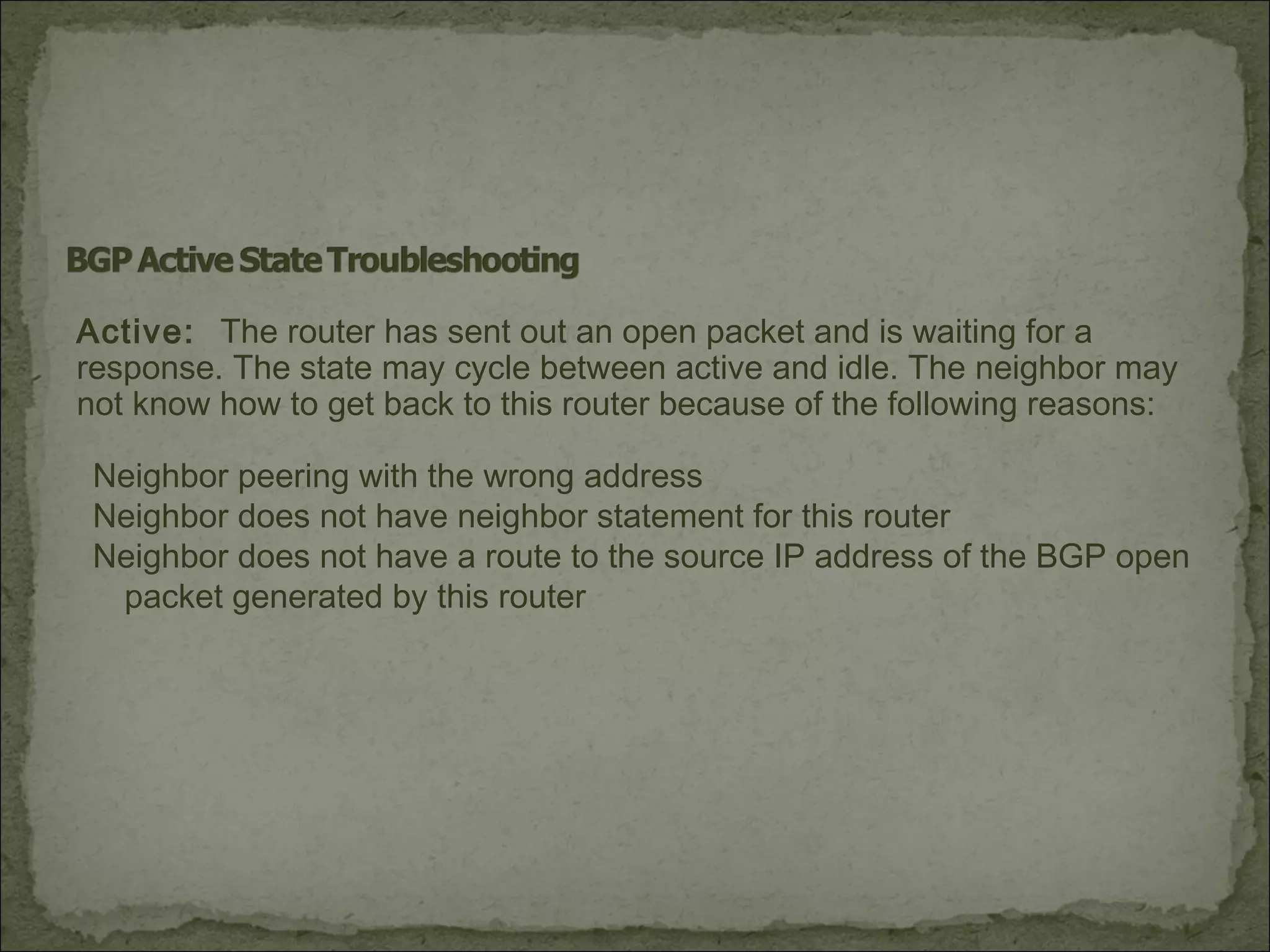
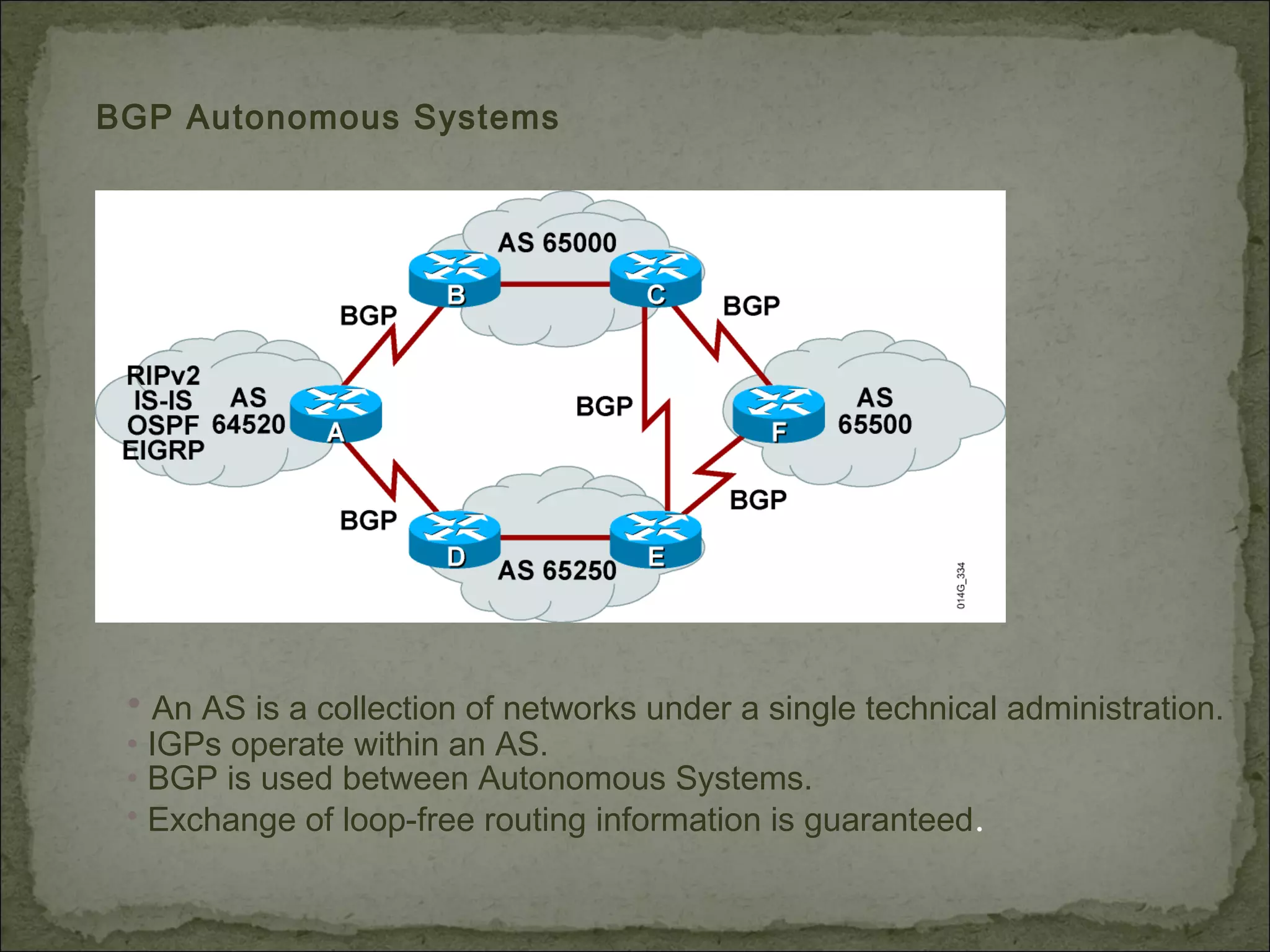


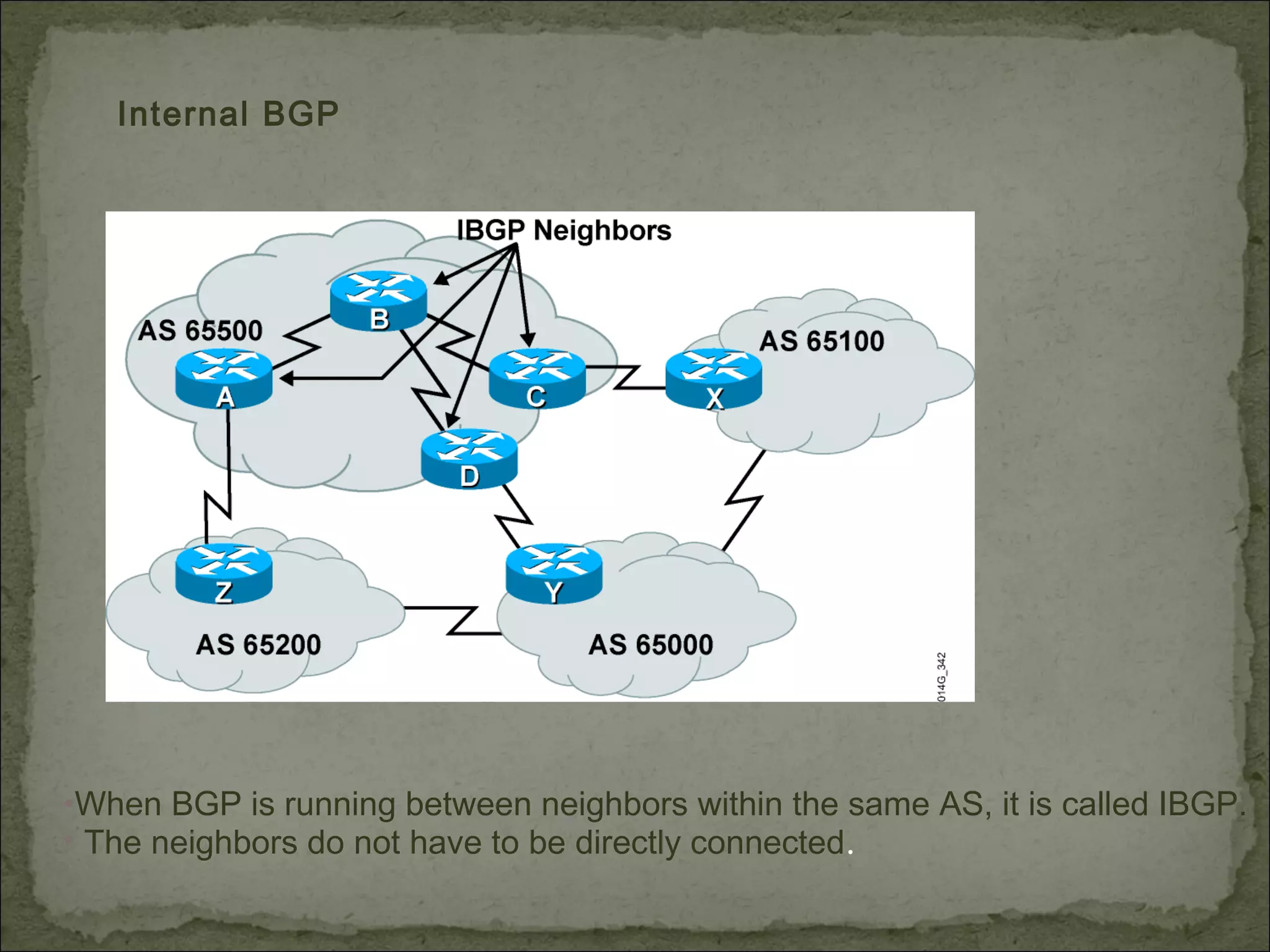
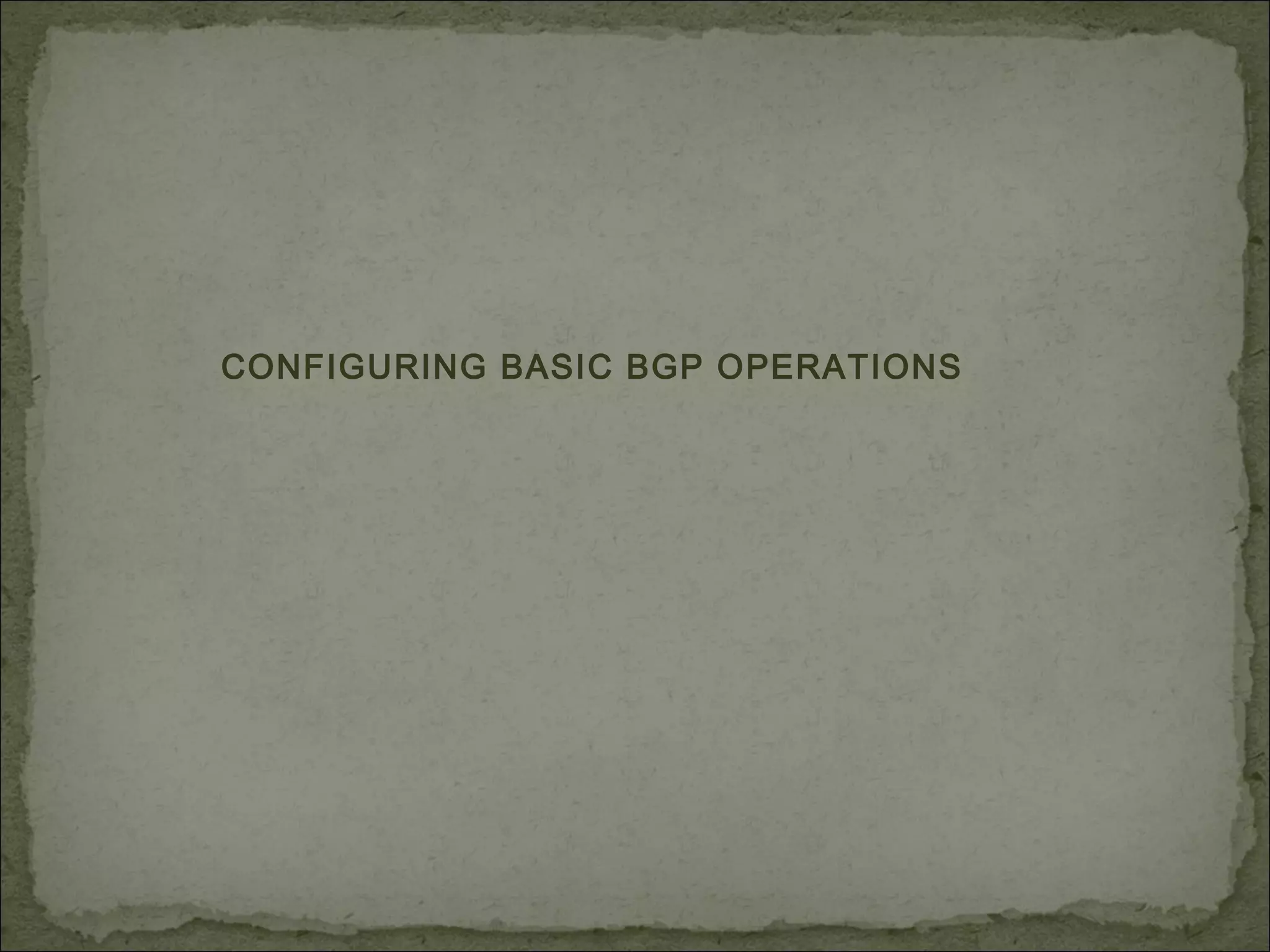
![router bgp autonomous-systemrouter bgp autonomous-system
Router(config)#
neighbor {ip-address | peer-group-name}
remote-as autonomous-system
neighbor {ip-address | peer-group-name}
remote-as autonomous-system
Router(config-router)#
network network-number [mask network-mask]network network-number [mask network-mask]
Router(config-router)#](https://image.slidesharecdn.com/bgp-140611105020-phpapp02/75/Bgp-16-2048.jpg)
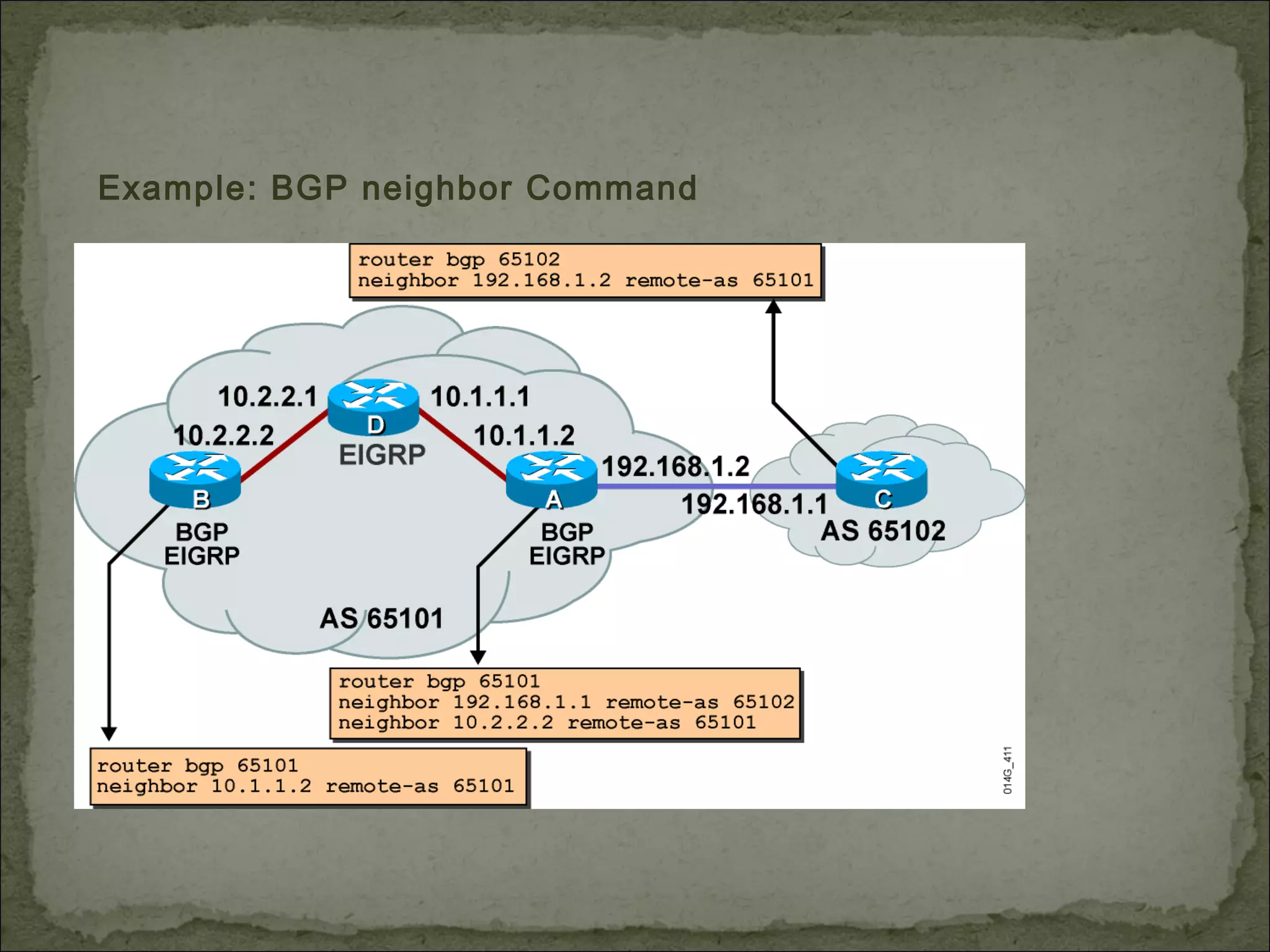
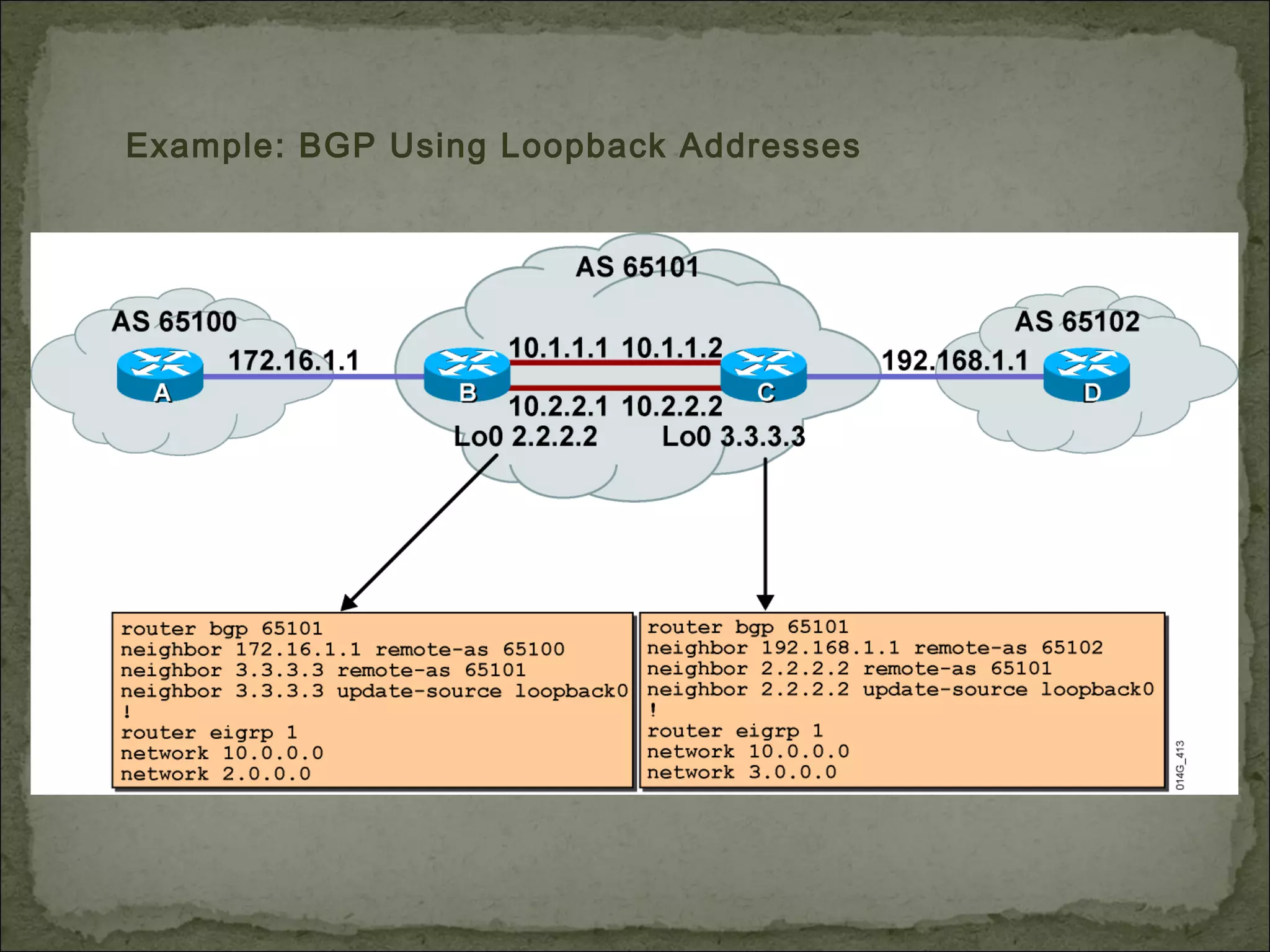
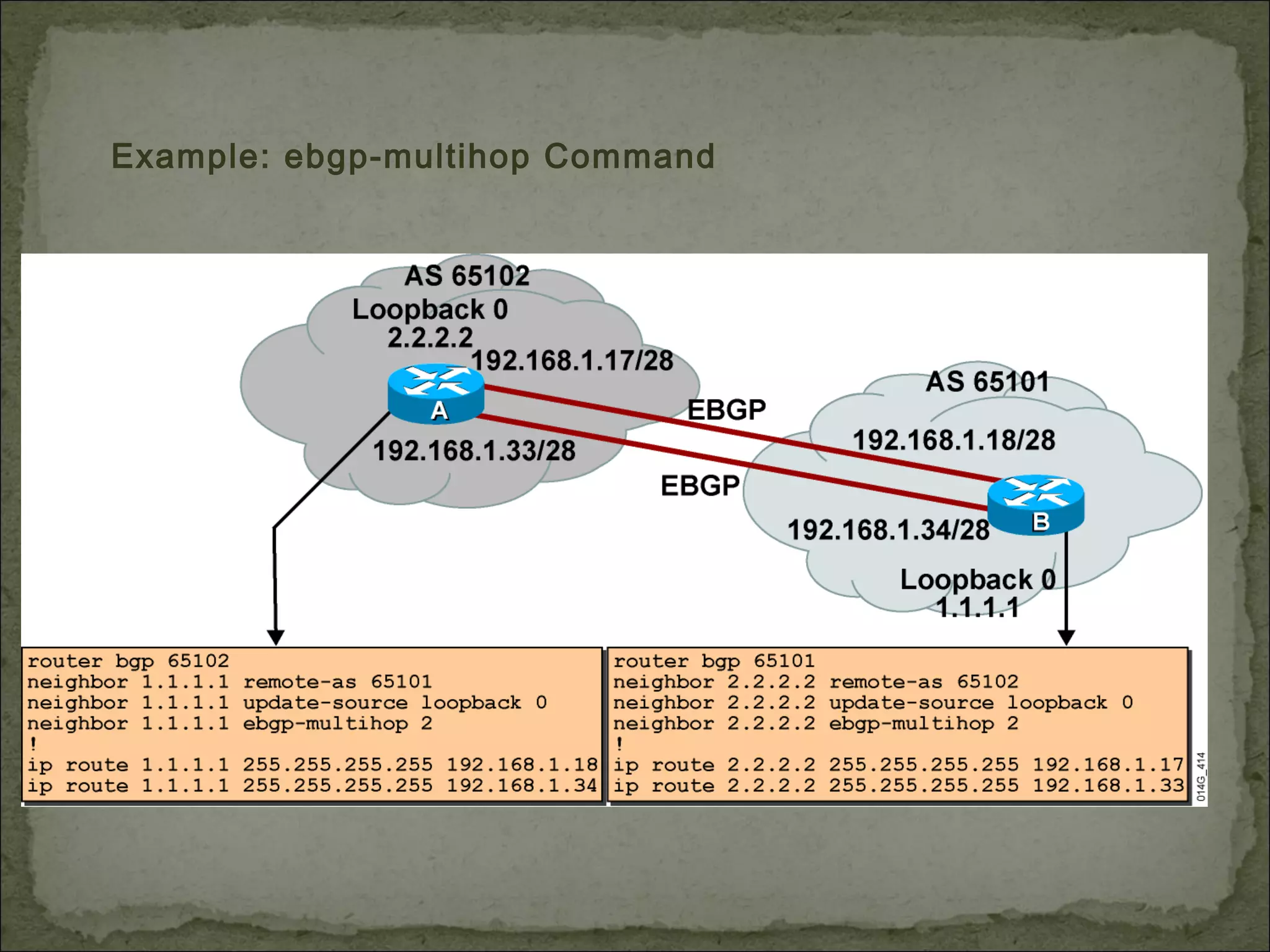
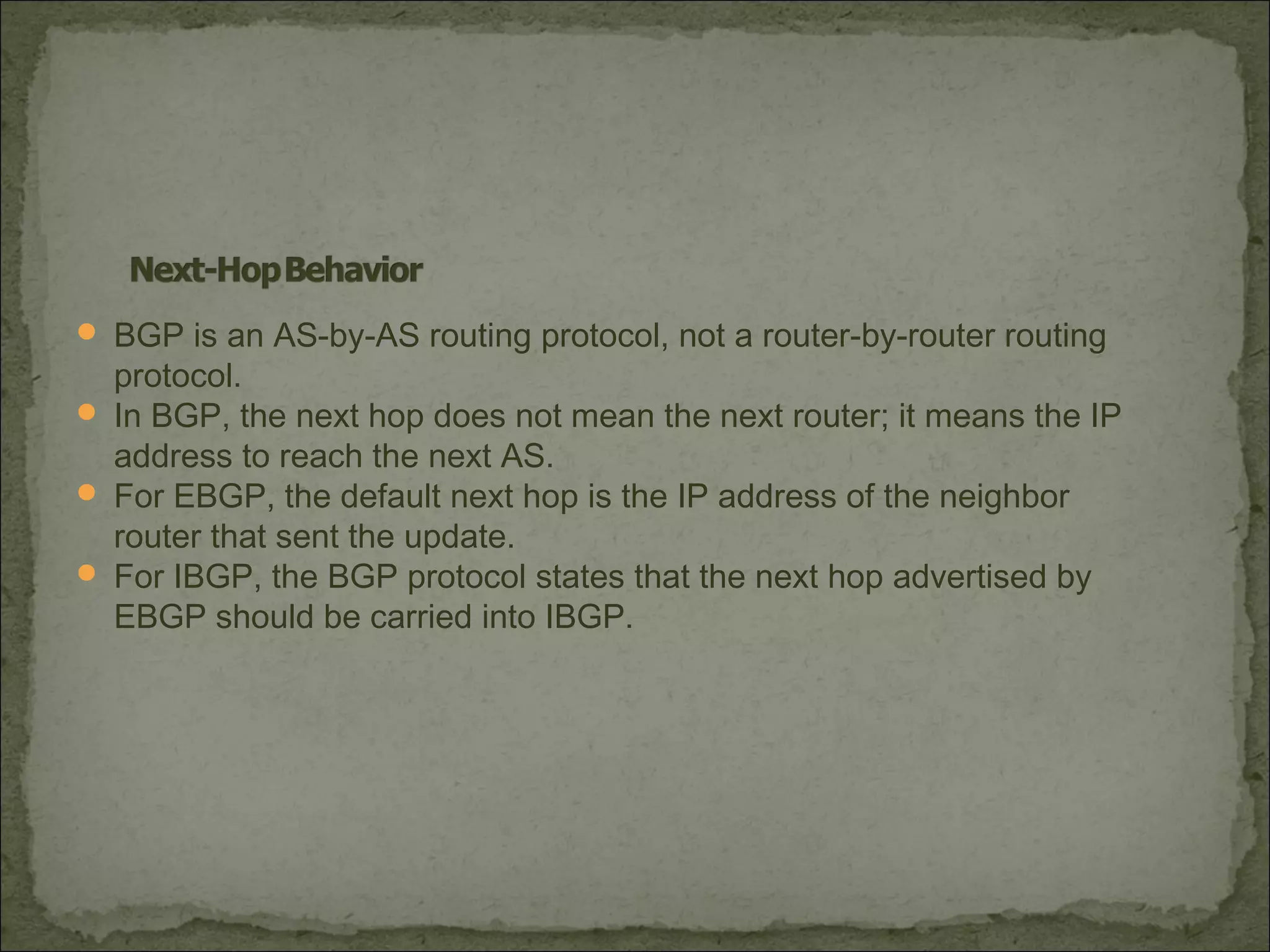
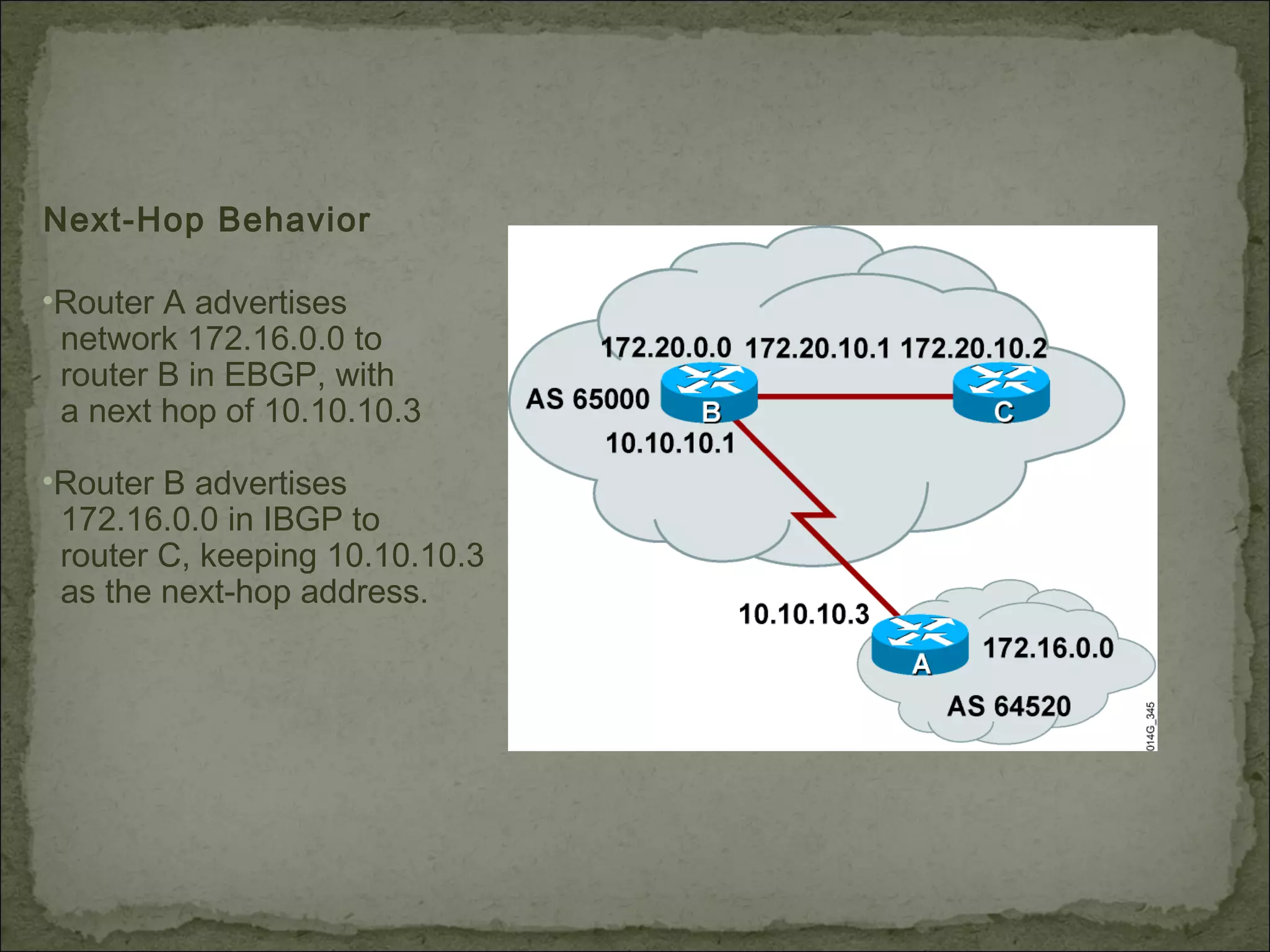
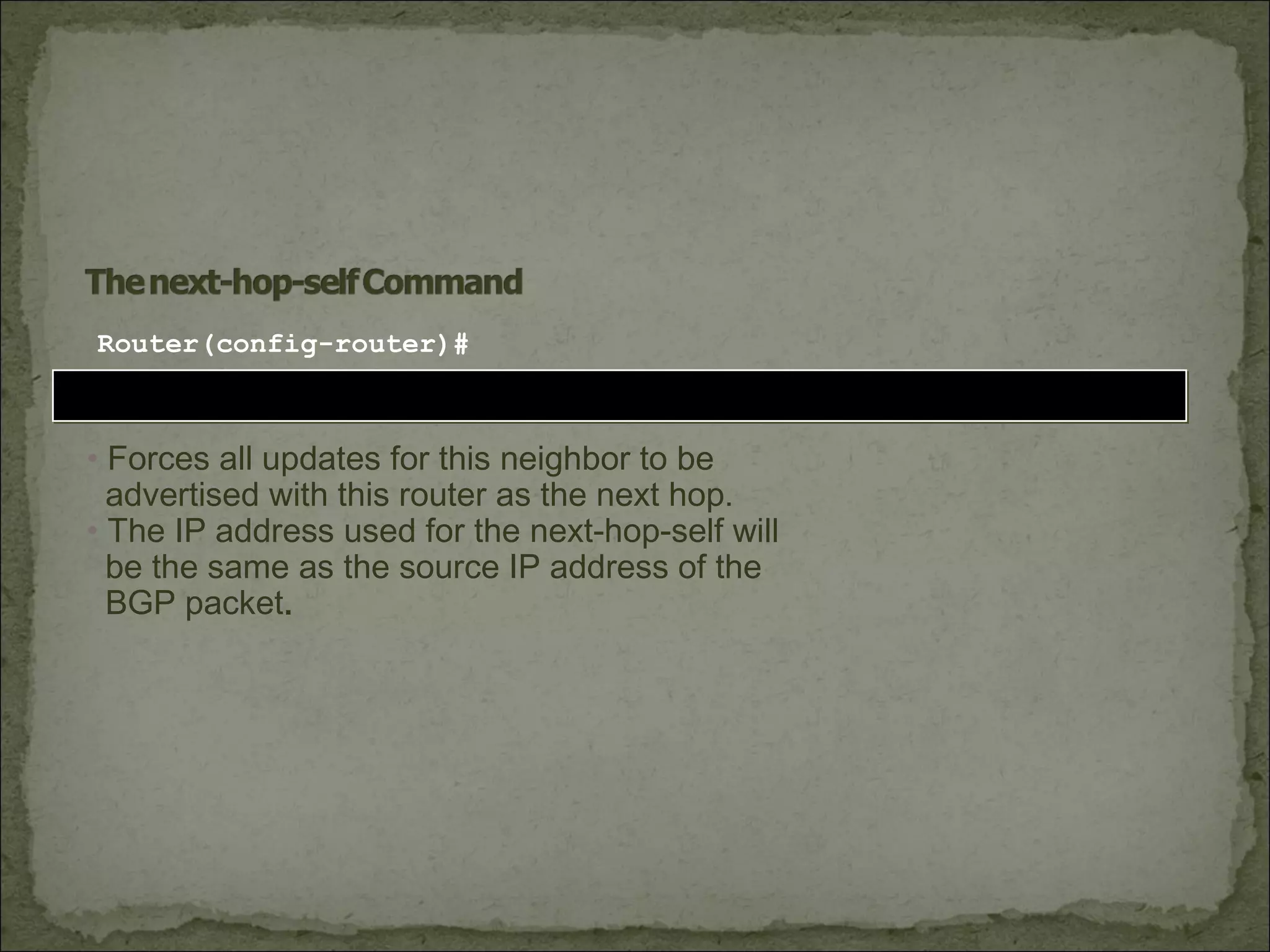
![neighbor [peer-group-name] peer-groupneighbor [peer-group-name] peer-group
Router(config-router)#
Creates peer group
neighbor [ip-address] peer-group [peer-group-name]neighbor [ip-address] peer-group [peer-group-name]
Router(config-router)#
• Defines a template with parameters set for a group
of neighbors instead of individually
• Useful when many neighbors have the same outbound policies
• Members can have a different inbound policy
• Updates generated once per peer group
• Simplifies configuration](https://image.slidesharecdn.com/bgp-140611105020-phpapp02/75/Bgp-23-2048.jpg)
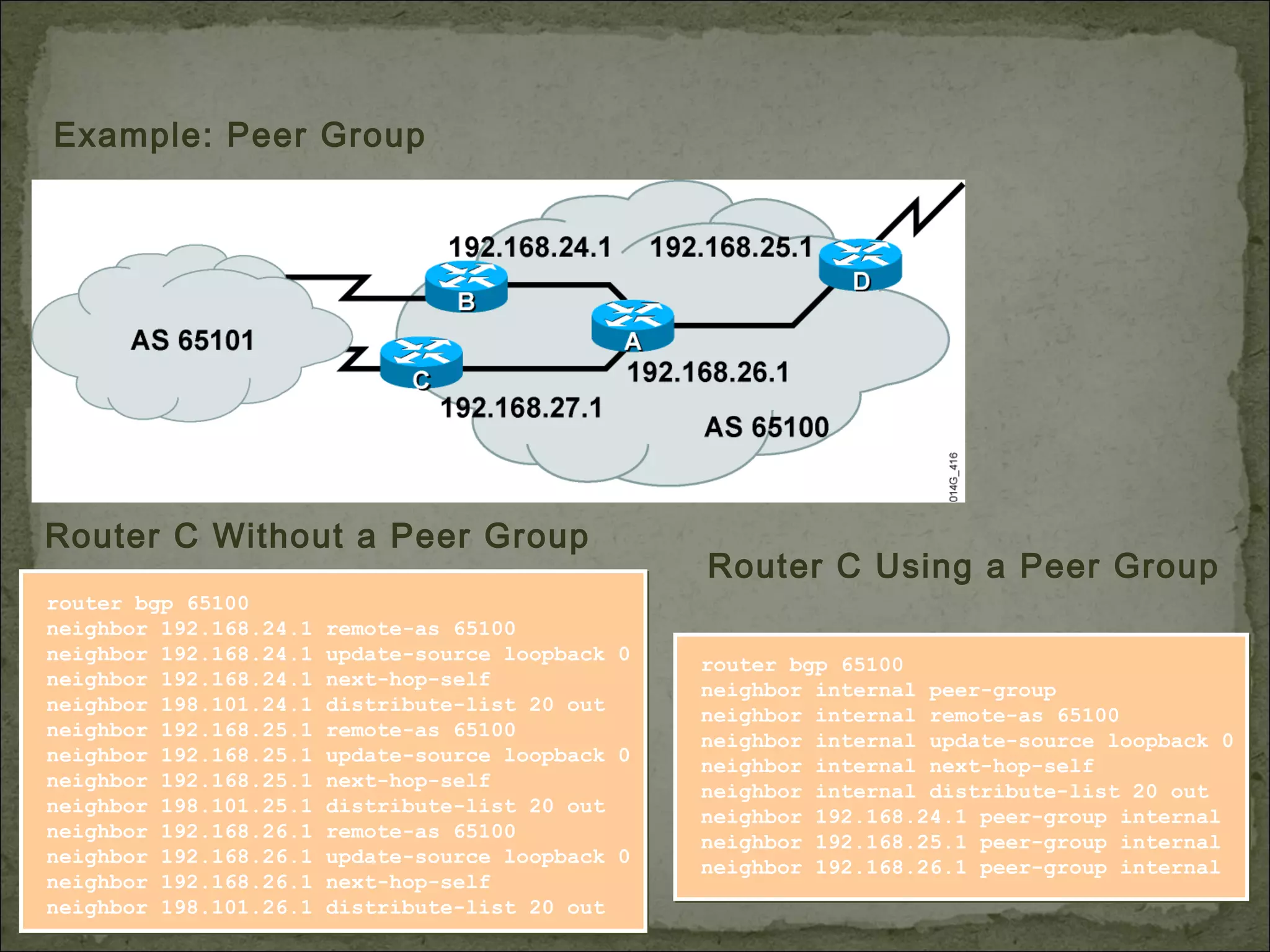

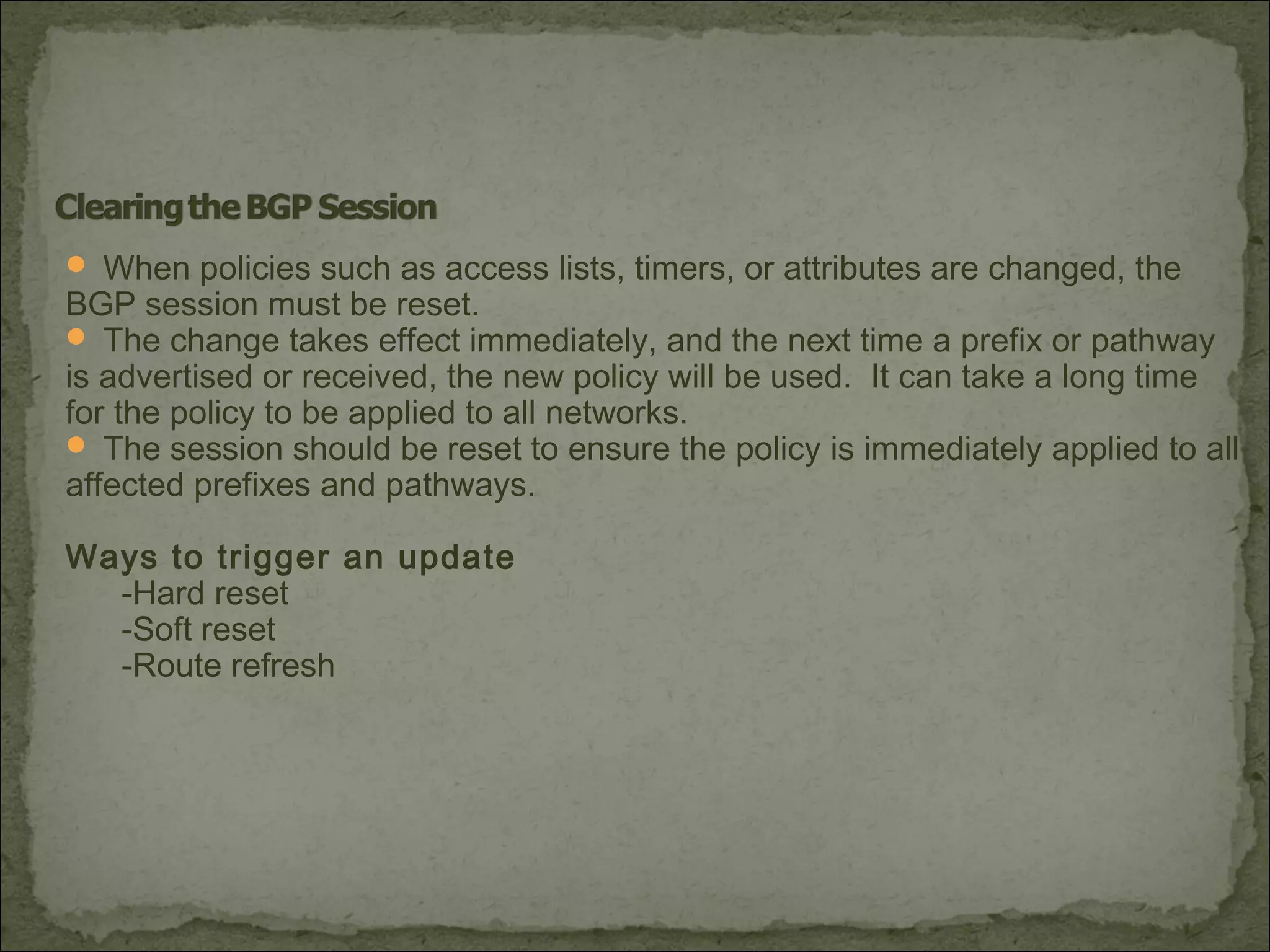
![clear ip bgp *clear ip bgp *
router#
• Resets all BGP connections with this router
• Entire BGP forwarding table is discarded
• BGP session transitions from established to idle; everything must be
relearned
clear ip bgp [ip-address]clear ip bgp [ip-address]
router#
• Resets only a single neighbor
• BGP session transitions from established to idle; everything from this
neighbor must be relearned
• Better than the clear ip bgp *](https://image.slidesharecdn.com/bgp-140611105020-phpapp02/75/Bgp-27-2048.jpg)
![clear ip bgp {*|address} [soft out]clear ip bgp {*|address} [soft out]
Router#
• Routes learned from this neighbor are not lost.
• This router resends all BGP information to the neighbor without resetting
the connection.
• The connection remains established.
• This option is highly recommended when changing outbound policy.
• The soft out option does not help if changing
inbound policy.](https://image.slidesharecdn.com/bgp-140611105020-phpapp02/75/Bgp-28-2048.jpg)
![clear ip bgp {*|address} [soft in]clear ip bgp {*|address} [soft in]
Router#
• Routes advertised to this neighbor are not withdrawn.
• This router stores all updates sent from this neighbor so new inbound
policies can be evaluated without resetting the BGP session.
• The connection remains established.
neighbor [ip-address] soft-reconfiguration inboundneighbor [ip-address] soft-reconfiguration inbound
Router(config-router)#
• A router BGP subcommand that notifies this router to store all updates
from this neighbor in case the inbound policy is changed.
• The command is memory-intensive.](https://image.slidesharecdn.com/bgp-140611105020-phpapp02/75/Bgp-29-2048.jpg)
